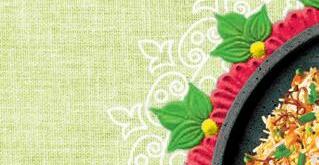




Dear Readers, Congratulations! We all have collectively overcome all obstacles of yet another eventful year. Both UK and India’s partnership to roll out the vaccine against the Coronavirus has been a gift to mankind. I am taking the liberty to say, that the pandemic is now in the past and this Diwali we have indeed witnessed the victory of good over evil. After two unforgettably challenging years that several generations had never imagined over decades, this festive season, our families and loved ones with be with us to celebrate and nurture the traditions of our culture.

However, we humbly remember our late Monarch, Queen Elizabeth II who left for her heavenly abode last month on 8th September, 2022. The British Indian community of the United Kingdom shall always reminisce one of the strongest, most wise and dignified woman who acted as a bridge between the native countrymen and us, members of the ethnic minorities. This Diwali, let’s say a little prayer for our late Queen and for the health and prosperity of our King Charles III who has taken over the legacy of his legendary mother.
Amid all the socio-political chaos we witnessed in the recent months, I see only positive outcomes from those events. While Rishi Sunak really inspired the British Indian dream by fighting the leadership race with utmost dignity, Suella Braverman’s exit as the Home Secretary, days after her appointment in PM Truss’ cabinet is nothing that deters our fellow community members from actively participating in the British political scene. I believe that Britain is more resilient than its own government. Yes, the Goldman Sachs is expecting a worse recession in the UK in 2023, but let me tell you, we, as a community have always risen like a phoenix. This too shall pass.
Dear friends, I’m so pleased that this year the London Mayor’s Diwali on the Square kickstarted the celebrations in London. We’re grateful to the tireless work of our temples like BAPS Neasden Temple or Anoopam Mission or Bhaktivedanta Manor that are honouring the traditions of our culture, far away from homeland.
From our conversations with eminent personalities and dignitaries for our Diwali magazine, we have learned that the Living Bridge despite all the baseless rumours of the collapse of the UK-India Free Trade Agreement is going strong. Shehla Hasan of Manchester India Partnership tells us that there are talks of direct flights from Midlands to India, which will help citizens and businesses on both sides of the bridge. This will also greatly benefit sutdents who have to otherwise take connecting flights to reach UK. There are job opportunities for Indians living in the UK and Britain is recognising young British Indian talent by honouring young girls like Iona Mandal from Birmingham for prestigious titles like Birmingham Poet Laureate 2022.
I’m also elated to inform you that this year, conversations in our magazine have gone global. We could trace people from the Indian diaspora and origin across the globe who have strengthened India’s Living Bridge connecting it to superpowers and soaring economies, making a real difference to not just their financial future, but also making waves in the socio-cultural arena.
May we all continue to conquer greater heights, with more love, fearlessness and determination. I wish you all a healthy, happy and a very prosperous new year and happy diwali!
Om Namah Shivay! CB Patel
CB Patel




¸Цªъઆ´®Ц
અ³щ ´╙º¾Цº§³ђ આ´®Ъ ÂЦ°щ ÿщ
§ђકы, આ´®щ આ ĬÂє¢щ આ´®Ц ç¾¢↓ç° ³Ц¸±Цº



¸ÃЦºЦ®Ъ ŭЪ³ એ╙»¨Ц¶щ° - ╙˛¯Ъ¹³щ કы¾Ъ ºЪ¯щ ·а»Ъ ¿કЪએ. 8 Âتъܶº 2022³Ц ºђ§ ¯щઓ અ³є¯³Ъ µºщ¥Ц»Ъ ³Ъકâ¹Цє. ╙Įª³³ђ ·Цº¯Ъ¹ Â¸Ь±Ц¹ આ ±щ¿³Ц ¸а½·а¯ ╙³¾ЦÂЪઓ અ³щઆ´®Ъ, ¾є¿Ъ¹ »£Ь¸¯Ъઓ ¾ŵщ ¾є¯ Âщ¯Ь Â¸Ц³ ¶³Ъ ºÃщ³Цº Âѓ°Ъ અ¬Ъ¡¸, ΦЦ³Ъ અ³щ ¢ѓº¾´а®↓ Â×³ЦºЪ³ђ કж¯Φ ºÃщ¿щ. ±Ъ¾Ц½Ъ³Ц આ ´¾↓ ╙³╙¸Ǽщ આ¾ђ આ´®щ ╙±¾є¢¯ ¸ÃЦºЦ®Ъ³Ц આÓ¸Ц³Ъ ¿Цє╙¯ ¸Цªъ ¯щ¸§ ¸ÃЦ³ ¸Ц¯Ц³ђ ¾ЦºÂђ ¸щ½¾³Цº Чકі¢ ¥ЦàÂ↓ - ¯Ъ¹³Ъ  ╙ˇ ¸Цªъ ĬЦ°↓³Ц કºЪએ. ¯Ц§щ¯º³Ц ¸╙óЦઓ¸Цє આ´®щ
´ºє´ºЦઓ³Ьє §¯³Âє¾²↓³ કºЪ ºΝЦє ¦щ
±Ъ´ђÓÂ¾Ъ ક ¸Цªъ ╙¾╙¾² ΤщĦ³Ц અĠ®Ъઓ અ³щ ¸ÃЦ³Ь·Ц¾ђ ÂЦ°щ³Ъ ¾Ц¯¥Ъ¯ અ³щ ¸Ь»ЦકЦ¯ђ¸Цє°Ъ અ¸щ એª»Ьє ¿Ъ¡Ъ ¿Ä¹Цє ¦Ъએ કы ¹Ьકы- ╙¬¹Ц ĭЪ ĺъ¬ એĠЪ¸щת ·Цє¢Ъ ´ ђ Ãђ¾Ц³Ъ ´Ц¹Ц╙¾Ãђ®Ъ અµ¾Цઓ ¦¯Цє ¾є¯ Âщ¯Ь ¾²Ь ¸§¶а¯ ¶³Ъ ºΝђ ¦щ. ¸Ц×¥щ窺 ઇЩ׬¹Ц ´Цª↔³º╙¿´³Ц ¿щÃ»Ц Ã³ કÃщ ¦щ કы ╙¸¬»щ׬°Ъ ·Цº¯³Ъ ÂЪ²Ъ Ù»Цઇª ¿λ કº¾Ц ¸Цªъ¸єĦ®Ц ¥Ц»Ъ ºÃЪ ¦щ, §щÂщ¯Ь³Ъ ¶є³щ ¯ºµ ºÃщ»Ц »ђકђ અ³щ ¾щ´Цº³щ ¶κ ¸±±λ´ ¶³¿щ. ╙Įª³ ´Ã℮¥¾Ц ¸Цªъ ક³щЩĪѕ¢ Ù»Цઇª »щ¾Ц ¸Цªъ ¸§¶аº °¯Ц ╙¾˜Ц° ઓ³щ ´® ¬Ц¹ºщĪ Ù»Цઇª³ђ »Ц· ¸½¿щ. ╙Įª³¸Цє¾Â¾Цª કº¯Цє·Цº¯Ъ¹ђ ¸Цªъ³ђકºЪ³Ъ ¯કђ ¦щઅ³щ ╙Įª³ ¹Ь¾Ц ·Цº¯Ъ¹ ªъ»щת³ЬєÂ×¸Ц³ ´® કºщ¦щ. ¯Ц§щ¯º¸Цє § ¶╙¸↨¢ÃЦ¸³Ъ આ¹ђ³Ц ¸є¬»³щ ¶╙¸↨¢ÃЦ¸ ´ђએª »ђºщª 2022
Ĭ╙¡ °¯Цє અÃщ¾Ц»ђ ¾ь╙ΐક ¶³Ъ ºΝЦє
·Цº¯Ъ¹
¸а½







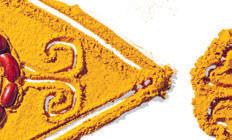






















It gives me great pleasure in wishing the readers of Gujarat Samachar and Asian Voice a very Happy Diwali and a prosperous New Year.
Diwali, the festival of lights, is a festival with a universal message which we can all relate to. It prompts us to remember that even the smallest light can instill hope and courage, whilst dispelling darkness and ignorance at any time.
The greatest reminder of that courage is when we commemorated the 50th anniversary this year of the expulsion of Ugandan Asians by the brutal dictator Idi Amin. The commemorative services and exhibitions across the country reflected the sheer resilience of the British Hindu community in the UK in facing the expulsion. Diwali is therefore also a timely opportunity to pay tribute to the outstanding contribution of the British Hindu community at large. Your contribution to all walks of life is what makes this country so great.
Unfortunately, the community tensions faced by the British Hindu community earlier this year have naturally been very disturbing, particularly to such a peaceful and integrated community. Freedom of religion is the cornerstone of British life and I strongly condemn all forms of racism and discrimination in our society. In doing so, I fully support efforts to protect the British Hindu community and raise awareness about forms of Hinduphobia which has no place in society.
I would also like to take this opportunity to congratulate the APBL Group on their 50th anniversary. Your contribution in serving the British Indian community for half a century has been truly inspiring.
I wish everyone celebrating a joyous, peaceful and happy Diwali.
Rt Hon Jake Berry MP Chairman, Conservative Party
Diwali is a magical time of year that brings Londoners of all backgrounds together to celebrate the Festival of Lights.
This year has been particularly poignant as, for the first time in three years, we were able to gather together in Trafalgar Square for the full scale, spectacular return of London’s world-renowned Diwali celebrations.
I recognise that this year’s Diwali comes at a time when many households will be facing uncertainty over the coming months from the rising cost of living. That’s why I was especially glad to support a free afternoon of Diwali fun for thousands of Londoners and visitors in the heart of our great capital. We enjoyed a glorious blend of music, culture, food and art, and it was wonderful to see Trafalgar Square once again bursting with colour and energy.
The key messages of Diwali mean a lot to me: the triumph of light over darkness and the importance of unity, togetherness and sharing. In recent weeks, we have seen some who are intent on stirring up trouble and dividing our communities, however Diwali events across London, like Diwali on the Square, that bring people of all faiths and backgrounds together send out a powerful message of unity. In London, we don’t just tolerate difference, but we respect, celebrate and embrace it.
Thanks to the generosity of the Hindu and Sikh neighbours I grew up alongside, I have been lucky enough to experience, on many occasions, the joy and unity that Diwali brings and I know Londoners across our city will be joining together with their families and friends to celebrate.
I wish all those celebrating a very happy and joyous Diwali.

 Rt. Hon Mayor of London, Sadiq Khan
Rt. Hon Mayor of London, Sadiq Khan
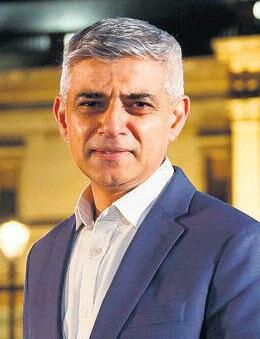





‘Be the Change You Wish to See in the World’ – these words resonate with Amitabh Shah who started the India based NGO - YUVA Unstoppable in 2005 at the mere age of 23. Touched by the stories he came across each day, inspired him to act as a catalyst in the development, improvement and growth of society. His journey made him realise that in spite of the pain and hardships faced by several, that there is a lot of goodness in the world and everyone wants to help but may not know how to go about doing so. With this background in mind Amitabh started YUVA Unstoppable, India’s premier youth movement organisation.
As YUVA started taking small footsteps towards development goals, the 23-year-old Amitabh Shah aimed to make a difference in the lives of the younger generation.This generation has the force to propel society into further growth and development by reaching higher measures of success.With the assumption that education must assume the highest priority in India’s development mission, Yuva’s main programs aim to target a combination of youth and education towards propelling fast and sustainable impact. The education sector in India, although seeing rapid strides also faces some alarming
shortfalls within the system. One such shortcoming is lack of adequate infrastructure across schools and classrooms.


The aim was to transform the lives of less privileged children and youth by maximising impact in the education sector by focusing on the fundamentals – upgrading basic infrastructure facilities in schools, providing access to modern means of teaching-learning, and developing more compassionate and grateful youth that become ambassadors of social change. Since its inception in 2005, YUVA has launched several programs – School Transformation (WASH facilities), Education Scholarship Scheme (Udaan), Digital Smart Classrooms, YUVA Ambassadors, COVID Relief Initiatives, all with the ultimate aim to provide opportunities for the development of youth.
Amitabh Shah says “I believe in the power of the youth. Their energy is infectious and their potential, if channelised in the right direction can have far-reaching growth. The India story relies on its children and youth becoming responsible and contributing members of society and we at Yuva Unstoppable are committed to tapping into this generous resource to showcase maximum impact and result for the nation”.
YUVA’s main impact can broadly be classified into the following areas: School Transformation Program: Sanitation – a right considered basic and necessary still evades a large number in India. In India’s schools, close to 22% do not have toilets for girls, 58% of preschools have no toilets at all and 56% of preschools have no water on the premises (Source: Rapid survey on children, UNICEF).
Yuva Unstoppable embarked on its journey of ensuring proper and adequate sanitation facilities across government schools in India. This





program partners with philanthropists, social entrepreneurs and corporate houses to improve the basic infrastructural amenities such as drinking water, urinals, wash areas and the classrooms, of municipal schools thus improving the lives of the children, especially the girl-child. Yuva Unstoppable’s vision is to transform 10,000 schools across India and positively impact 5 million children directly.
So far, Yuva Unstoppable has already transformed 3000 schools reaching over 6 million beneficiaries spread across 14 states of India via better toilets, improved drinking water, scholarships, smart classrooms, value-based trainings, behaviour change sessions etc. The ultimate aim is to overall enhance and improve the ambience of the school and make schools a better learning space.
The program also supports eplatforms and virtual learning resources to students by creating digital classrooms. This proved to be extremely essential during the COVID-19 pandemic wherein schools were physically shut and students and teachers had to make a quick change to online learning. So far, Yuva Unstoppable has created about 1000+Digital Classrooms across India, distributed over 10000+ tablets/ other electronic devices for students.

Scholarships Program: The program aims to give wings to the dreams of youth by providing longterm scholarships, coaching and mentoring. Students from economically backward communities (family income of less than $4000/- per annum) are selected based on merit, performance and need to enable them to pursue a career of their choice. This program has led to breaking all stereotypes by educating & empowering girls from remote communities and strive to take collective action for equality.
◆ Ranked as one of the top 10 NGOs in India working towards improving conditions for impoverished people across the country by CNBC TV18
◆ Recognised & appreciated for its humanitarian work in 2021 during the COVID-19 pandemic by the Honourable President of India Shri Ram Nath Kovind.
◆ Amitabh Shah is the youngest Indian to win the International Ellis Island Award in 2019, past medallists include Nobel laureates, past U.S. Presidents and countless leaders in the fields of education, arts, sports & humanitarian work
◆ Yuva Unstoppable is the recipient of the ‘IBM Impact Award 2017’
◆ Amitabh Shah was the 2015 winner of the Prince’s prize for innovative philanthropy, conferred by HSH Prince Albert II of Monaco wherein Jack Ma of Alibaba Group was a semi-finalist
◆ The London School of Economics India Observatory has found a 15% increase in enrolment in schools with a YUVA intervention and, Improvement in learning outcomes in Maths and Science and all other subjects by upto 4 times
YUVA Unstoppable in the UK
Over the last few years, Yuva has been receiving patronage from personalities and institutions in the UK, one such being the Lifelines International Fund for Education (LIFE) and Nelumbo Foundation’ who are both very proud supporters and sponsors of some of the transformational work being done by Yuva. Their overall commitment and
economically challenged backgrounds supporting them through their higher secondary and college education. Students come from difficult backgrounds with most families averaging an annual income of less than 3000 GBP.
“We are grateful for the support and encouragement we have received from Rupin and Madhavi Vadera. Their faith in the work done by Yuva Unstoppable makes us proud and responsible to provide for more children” says Amitabh Shah.
“A chance and an opportunity, is all these children require for them to believe in themselves and realise their dreams. My interaction with them made me realise the power of support, guidance and encouragement and its far-reaching effects. These children taught me about perseverance and grit in the hardest of times and circumstances. We at the Lifelines International Fund for Education believe in the value and long-term impact being brought into these children’s futures through transformative education and we are proud to work with Yuva Unstoppables’ initiatives as part of our journey together” says Mrs Madhavi Vadera, Deputy CEO and Trustee – Lifelines Fund.
contribution stands at a total of 400 schools that will be upgraded with better infrastructure, sanitation facilities and modern teaching and learning equipment ensuring thousands of children benefit and are able to brighten their future.
This partnership has so far led to the overall infrastructure and sanitation upgradation across 20 schools in Porbandar and Ahmedabad benefitting nearly 5500 children through improved WASH facilities, smart classrooms and behaviour change sessions.
The partnership has also resulted in providing scholarships to 250 needy and deserving students from

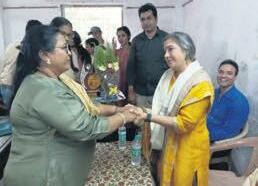

Amitabh believes ‘Gratitude, SelfBelief and Compassion’ are the 3 pillars of a meaningful life. What started as a youth volunteer movement has today, YUVA empowered more than 6 million vulnerable beneficiaries directly and indirectly including 3000 schools with improved sanitation, water, access to technology, scholarships, nutrition, vaccination etc. and the journey continues.
To know more about Yuva Unstoppable and contribute to their cause, please write to delnaz@yuvaunstoppable.org
Sadly, this year we bid farewell to our gracious Queen who reigned over us for 70 years. She was a dedicated public servant and created her unique place in the hearts of millions across the globe. We now have a King Charles the third. God save the King.
Diwali is the most important, grandest and immensely popular Indian festival, which is now celebrated worldwide. The globally dispersed Indian Diaspora spreads this epic message of the triumph of good over evil. As Indians across the globe become increasingly thriving and vibrant, they can celebrate their festivals, especially Diwali, with great pomp and show. By preserving and propagating their culture, they have made their domicile countries richer and more colourful. Indian cuisine, music, jewellery and dresses are becoming increasingly popular with people from all backgrounds and ethnicities.
Diwali is perhaps the only festival for which the celebrations last for several weeks and even months, as there are pre-Diwali and postDiwali parties that run right up to Christmas. Gifts and sweets are exchanged with near and dear ones. Diwali brings happiness and lifts everyone's mood and spirits, which induces a fresh zeal in everyone. As this is a family event, it is enjoyed by everyone, including the host communities. Many governments worldwide encourage and celebrate Diwali with the local population. Diwali celebrations in UK cities have become probably the largest outside India.
Diwali is celebrated at the residence of the Prime Minister, 10 Downing Street, at the House of Commons, with cross Party Parliamentarians joining in the celebrations as we are today. Thousands of people attend Diwali at Trafalgar Square, including tourists visiting the capital who are mesmerised to see the colourful pageant of music, dance and food.
Diwali is the only day when the world's three great religions, Hindus, Sikhs and Jains, celebrate this day jointly and for different reasons. Hindus celebrate the return of Lord Rama with his wife and brother to his Kingdom of Ayodhya after an exile of 14 years. The streets and towns were lit up with Diwas (candles) to welcome them home during his return.
The Sikhs, on the other hand, celebrate Diwali as 'Bandhi Chhorh Day'. On this day, their 6th Guru, Guru Hargobind Sahib, arrived in Amritsar after being released from Gwalior prison by the then-Mughal King, Jahangir. Guru refused to leave the prison unless 52 Hindu princes who were also in prison were also released.

The Jains celebrate Diwali as Lord Mahavira, the last Jain Tirthankaras, achieved Nirvana at a Pavapuri. Sri Gangadhar Gautam Swami also gained absolute wisdom on this day. This is what makes Diwali a wonderful day for so many.
As a matter of fact, behind these celebrations, there is a serious message of preserving self-respect, family honour and sacrifice for others. Lord Rama left the comforts of his kingdom with his devout wife and loyal brother to uphold self-respect and family honour. In the process, he showed the world that the world would be a more selfish place without these attributes. Lord Rama also demonstrated that if one path was righteous, even the cleverest and most powerful Kings with massive armies could be defeated. His wife Sita and brother Laxman also showed the message of loyalty to the world. Lord Rama's values have become even more critical in our world, where greed and selfishness have become rampant.
We have great pleasure in extending our heartiest best wishes for Diwali to all your readers.


This has been a very exciting year for UK-India relations as we marked 75 years of independence and fruitful engagement. We are in the midst of finalising a UK-India Free Trade Agreement. This will mark a new dawn for the partnership between our two great countries. This Diwali we hope and pray that we can continue to strengthen and nurture this partnership.
Here in the UK, we continue to support and represent the “Living Bridge”. The 1.7mn British Indian diaspora has made an outstanding contribution to Britain and will play a crucial role in bringing UK and India together.


Happy Diwali to all.
Lord Rami Ranger CBE






























































































It was in December 2019 that the World Health Organisation alerted the world to a novel coronavirus, and the virus is still prevalent among us. Since then we have witnessed political instability, the bitter war in Ukraine, and now, a deepening cost-of-living crisis. What the immediate future holds is hard to tell, but I do believe that the indomitable spirit of the British people that saw us through the World Wars and several other crises will prevail. Through generations Diwali has continued to hold out a beacon of light and hope in good times and in seemingly impossible situations. I am confident that the same spirit will guide us through the uncertainties that lie ahead.
May this Diwali be a season of hope and peace as we, as a nation, look forward to a prosperous future.
Lord Raj Loomba CBE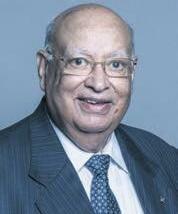
I would like to wish all the readers of Asian Voice a very happy Diwali. The spiritual significance of Diwali is one of hope over despair, light over darkness and good over evil: something we should all celebrate and has been embraced across the country. This year will mark the first time since 2019 that we have been able to come together and celebrate as we normally would, and I know that homes, Mandirs and Gurdwaras across the country will be filled with happiness and joy as we recall the inspirational story of Rama and Sita, the strength of their unity and friendship and the defeat of Ravana.
At this most auspicious of times, we can reflect on and celebrate the fantastic contributions that the Indian Diaspora continues to make to life here in Britain, and the historic ties between the UK and India.
Rt Hon Priti Patel, MP for Witham
India, a country of 1.4 billion people, is now the 5th largest economy in the world - projected to grow at over 6% next year.
The 1.5 million strong Indian diaspora in the UK is the largest ethnic minority in the UK and its successes continue to go from strength to strength. They are the living bridge between the UK and India.
The landmark Free Trade Agreement between the UK and India will greatly help increase trade, business and investment as well as strengthening the strong ties between our two great countries in every aspect.
There is so much potential to work closer together and to collaborate, be it research, innovation, defence or manufacturing.
Our bi-lateral trade in goods and services of £25 billion is just scratching the surface of its potential. We can now aim for a multiple of that figure as well as increase bi-lateral investment.
Best wishes for a Happy Diwali and a prosperous New Year. May the IndiaUK relationship go from strength to strength.


 Lord Karan Bilimoria CBE DL
Lord Karan Bilimoria CBE DL

 DIWALI
DIWALI

Withall the traction between India and Greater Manchester region with its standard rules, the whole idea started because of the living bridge which has existed over the years. The quality of contribution that the Indian diaspora brings to the local economy is great.
Shehla Hasan, Executive Director of Manchester India Partnership (MIP) exclusively told ABPL, “India is the second source of FDI for Greater Manchester. These are the reasons why this partnership came about; just to give a stronger focus on this relationship, to give it some form, and to the great soft power of the living bridge, that is creating trust and understanding between the two countries. That is what a Manchester-India Partnership does.
The first one is connectivity, that's more a catalyst, and also an ambition. Hasan said, “We are working to get a direct flight between Greater Manchester and India in a big way. This was already a proven business case. And its flights had in fact, started by Jet Airways, but then, Covid hit and things had to go on a downward spiral.
“But today, I am very happy to say that there is this keen interest in Dubai airlines, and the Manchester Airport to get that direct flight up and running as soon as possible which will also help students who are coming from India to take a direct flight. So with the students, businesses, and touriststhe visitor economy in Manchester is thriving.”
“A lot of times people think the partnership is only about trade and investment. We are talking in a much more holistic way. It has got highlighted in the recent strategy, which was launched by Mayor Andy Burnham, in September. Basically, there are five ambitions which may pass, which we have highlighted along with the catalysts that we see will be able to enable us to attain those ambitions.”
However, Hasan mentioned that the sites around Manchester like the Lake District, and the Peak District in North Wales, are probably lesser known than India. “We'd like to see more visitor footprints from India in the Greater Manchester area. I'm really delighted to tell you that between 2018 and 2019, in the pre-Covid years, the number of tourists from

India increased by 138%. The tourists spend from India like Indian tourists, increased by 484%. That's amazing. They were by far the highest spenders in the Greater Manchester economy. So you can imagine what's going to happen if there are direct flights,” the MIP Director added.

MIP showcases Manchester's strengths like, for example, digital health, and innovation. Advanced manufacturing of electric vehicles, for example, is another very big plus, for Manchester. Even though these are some of the areas where not only FDI is definitely a very big part of where UK comes from, it's not only FDI, it's also the relationships, the collaborations,
the tech transfer, the crosspollination of ideas, the entrepreneurship, the venture capital.


Shehla said, “That is something that we want to broker those conversations because there's so much potential. It's not only entrepreneurship and innovation, but it's sports. Manchester has some of the most world-class sporting clubs, whether it's the Lancashire Cricket Club, the


‘The ‘Make in India’ dream is actually coming to fruition now.’
by: Shefali SaxenaShehla Hasan



































h e
t
h a f
ate
Manchester United Club, or Man, Man City.
“There's keen interest in India, the kind of fandom that's there in India, for cricket or for football, and we are just scratching the surface. We'd like to see more collaborations between sports, and anything that creates wealth for the community, that is something that we are looking at.
“Last but not the least, it's the living bridge, it's the culture - what Indians and India do for the Greater Manchester economy, that needs to be highlighted that needs to be celebrated.



“We had an MoU with Bangalore, and now Hyderabad and Telangana are really coming up. Why India? Because India is the fastest-growing economy right now. India is currently a 3.3 trillion economy with 106, unicorns, which is the third in the world, and $84 billion came as FDI during the

Covid. The ‘Make in India’ dream is actually coming to fruition now.”
The MIP head also mentioned that there is a great appetite, especially for the preseason tours of cricket clubs, and there's a lot of appetite for collaborations in India. Filming of course, for example, Lancashire Cricket Club - they have their own communications department, they have their own studios and those facilities are definitely there.
“If there are Indian filmmakers who want to look at specific players, Indian players playing for



Manchester, definitely there is potential, and we as a Manchester India partnership are the ones who can broker those stocks, and get those two sides together.
“When it comes to the Manchester India partnership, individually, I'm very happy to tell you that we are taking on an intern just next month, she is an Indian, student, and is going to be a parttime intern. We are also actively interviewing for the role of project manager in Manchester-India partnership. We’ve got a very healthy shortlist of some students from India whose skills are absolutely phenomenally brilliant, as well as some local candidates. We also try and work with the universities in Manchester for internships,” Shehla added.
Manchester India Partnership celebrates an annual Diwali dinner, which is hosted by the chair of MIP.
Photo credit: Manchester India Partnership

Mandal, 16, studies English Literature, Geography, Politics and Religious Studies in Year 12, King Edward VI Camp Hill School for Girls. She is the first Bengali of the Indian diaspora in the UK to be selected as Birmingham Young Poets Laureate for two years (Oct 2022 - Sept 2024), as part of a citywide application process by a panel of judges consisting of members of Writing West Midlands and the Library of Birmingham, the largest regional library in Europe. Here’s her exclusive interview with ABPL.


Being the Birmingham Young Poet Laureate is a position of immense honour that I have coveted ever since I felt the need to contribute meaningfully to the cultural prosperity of our city. The centralisation of London, perceived as the only hub for arts and culture within our nation needs to be reduced and promoting an equally diverse and talent storehouse as Birmingham, which I believe is not favoured as much as it deserves to be, is crucial. Our city hosts a dynamic powerhouse of creatives who require more exposure in the spotlight to rekindle and contribute to consequential conversations surrounding poetry. I hope that I can soon further occupy similar spaces of creative discussion to popularise poetry. It is high time we take poetry to the people, particularly among Birmingham’s younger population and dissolve the myth that poetry is elitist.
As a young person who loves literature and poetry, how do you organise your schedule to be able to nurture your passion?
I have only recently started Sixth Form, and as an A Level student pursuing English Literature, it is highly encouraging for us to engage in wider reading and pursue pre-existing passions surrounding literature. Despite an ever-increasing workload, I recognise that nurturing my passion for poetry is ultimately a form of enrichment, rather than a distraction or fruitless diversion. I
juggle my time between academic commitments with writing, translating (from my mother tongue Bangla), LAMDA lessons, participation in speech festivals, etc., and so much more. I like to try new things and get bored quite easily. I am generally organised in approach and writing poetry (and prose) for competitions from a tender age has taught me to live up to deadlines. Quality matters over quantity and over time, I have learnt to sieve through tasks which I wish to take and learn to be assertive with saying a polite ‘No’ if I would rather not handle it. Moreover, at times when I am lazy and tend to procrastinate, a nudge from a disciplinarian mum always helps!
Could you recommend some books and poetry for our young readers who aspire to be like you?

I would say, read everything you can get your hands on. You could gradually focus on a genre you fancy, for both prose and
poetry. On a personal note, a longtime favourite novel of mine is The Ocean at the End of the Lane by Neil Gaiman, surrounding themes of magical realism, horror, and fantasy. I have always been captivated by Gaiman’s coincidentally, poetic style and am a huge fan of the integration of frequent symbolism and hidden metaphors within his work. The Bell Jar, the only novel written by American writer and poet Sylvia Plath has also been very close to my heart and the fasciation only started when one day. I took up the book to explore Plath as a storyteller, more than a poet. Likewise, I read all kinds of poetry. However, a poet whom I have recently taken a liking to is Indian poet Kamala Das, who kickstarted confessional poetry. She writes on traditionally taboo themes involving her personal anguishes and her poems such as A Hot Noon in Malabar and The Sunshine Cat are personal favourites. I would recommend the Poetry Foundation page, a rich repository of classic




















































and contemporary poetry to read and appreciate.

How have you benefitted from actively participating in literally programmes and events?



Sharing platforms with likeminded creatives who are on a far more prominent scale than myself, has always been incredibly valuable and a personally enriching experience. Moreover, hearing first-hand experiences of working in the creative sector has allowed me to broaden my insight on the realities of pursuing a career in the arts, as well as an opportunity to listen and read the work of so many diverse, talented individuals. In this context, my association and tutoring with the writers of Writing West Midlands
and the Young Poets Network of the Poetry Society has been priceless. The poetry community in the Midlands is a very close-knit community of warm-hearted individuals, who have always been extremely supportive and gracious to help. In the summer of 2021, I attended a fully sponsored Arvon writing residential at the Hurst, Shropshire, being selected as a Foyle poet by the Poetry Society. This gave me a lifetime opportunity to be mentored by poets Keith Jarrett and Jacqueline Saphra and Cheryl Moscowitz (with whom I later collaborated in a Stephen Spender Trust project). My interest in public speaking and drama helped immensely in gaining exposure to the wider public by honing my communication skills and confidence which I undoubtedly would not have had otherwise.
What kind of emotional support do you have from your family, which more children like you deserve to nurture their talent?
My parents are my support system in this country, where we have no family, and we are one close unit battling times, both good and bad. Both my parents are exceptionally supportive of my pursuits and are relentless in their words of encouragement and emotional consolation. Facing rejection frequently is a harsher reality of being a young poet, and they are both undeniably proactive in helping me ground myself and improve my resilience in times of struggle. My father juggles around his personal commitments and time, driving me to literature
festivals, poetry workshops and for readings across Birmingham and beyond. Additionally, my mother often gives me suggestions for improvement in my work (which I may not always agree to!) and regularly updates me on upcoming opportunities or events which would be valuable additions to my existing repertoire. She is a huge driving force for me (and my harshest critic), guiding me in a journey which can at times be difficult to navigate.

“It is high time we take poetry to the people, particularly among Birmingham’s younger population and dissolve the myth that poetry is elitist.”
“The poetry community in the Midlands is a very closeknit community of warmhearted individuals, who have always been extremely supportive and gracious to help.”Iona performing in Sam Wanamaker Playhouse, Shakespeare's Globe on National Poetry Day, 2022 Iona with Tom Epps, Cultural Partnership Manager, Library of Birmingham Sharing her poem PoliNations at the YPL announcement ceremony in CBSO, Birmingham
































Dr Swati Saxena is currently working as a Technical Lead at NASA Ames for one of the research programs under NASA’s Air Traffic Management eXploration (ATM-X) initiative. Her research interests include data science for aviation (ATM), computational fluid dynamics and HPC, engine icing, turbomachinery and aeroacoustics. Before joining NASA, Swati has worked at Ansys Inc. and the GE Global Research Center. She has also held an adjunct faculty position at Santa Clara University. She is a lifetime senior member of AIAA. She has 25+ technical publications and holds two patents. She completed her MS and PhD in Aerospace Engineering from Pennsylvania State University and completed her undergraduate studies from IIT Kanpur in India. Swati’s roots go back to a small town in Uttar Pradesh, called Lalitpur.

Tell us about your profile at NASA. What makes it challenging for you?
My work at NASA involves solving long-term challenging problems in the area of commercial aviation, especially next-generation air traffic management and concepts to support sustainable aviation. In addition to the traditional commercial aircraft, the airspace will be shared by other air vehicles such as drones, uncrewed air vehicles and passenger air vehicles to support urban air mobility in the future. This poses additional challenges for air traffic management. My job is to come up with solutions to solve these challenges and further make airspace operations more efficient by using machine learning and AI methods.
As an Indian, how does it feel to be a part of your dream organization and make it big so far?
The professional journey of an immigrant can be very different and challenging as compared to a citizen depending on the job type. The aerospace industry has more
Dr Swati Saxenastringent rules when it comes to hiring non-citizens.
I came to the US at the age of 22 after completing my Bachelor's degree from IIT Kanpur in India. My journey in the US has been very fulfilling although as an Aerospace Engineer, I sometimes had limited opportunities as I was not yet a US citizen.
It's a great feeling to work at NASA and be able to contribute to the domain that I am passionate about.
As an Indian and more specifically as a woman, I feel very fortunate to get an opportunity to work with such brilliant minds at this esteemed place.
What are the innovations happening in the aerospace sector, which can help in preparing better for future climate emergencies?
The aviation industry is committed to building a net-zero sustainable aviation system by 2050. There are several new technologies and improvements over current operations that are being looked into to achieve this goal. A few areas of research include the development of more efficient aircraft and engine technologies with significant fuel savings, noise and emission reduction benefits and increase operations efficiency for improvements in all phases of flight.
What can India and the US do together to further strengthen their ties in this sector?
India has a very strong and growing commercial aviation industry. As a nation, India has to develop and implement a plan for the next 20 to 30 years to support not only collaboration with the US and other countries in this area but also invest
in homegrown companies and technologies to support the industry. There should be a bilateral technology interchange plan to accelerate the growth of the aerospace sector.
How do you celebrate Diwali? What do you do to keep your culture alive in a foreign land?

Diwali is the time to celebrate and each year, we celebrate Diwali in our homes here and with the local Indian community. We light lamps and perform pooja at home.
Various local Indian organizations (Bengali, Gujarati, Marathi, UP, Rajasthan etc.) host cultural events and Diwali celebrations at this time in the San Francisco Bay Area. The IIT Alumni Association also hosts an event called “Diwali Dhamaka” at this time. We have food, dance, music and a skit competition as part of this event. Several IIT teams participate and compete with each other.
Diwali is not a federal holiday yet in the US but there have been bills proposed to establish Diwali as a federal holiday.

What is your advice for more women who would want to pursue a career like yours and make it to NASA one day?
I am a huge supporter of women's education and always encourage them to pursue STEM careers. We need to create more awareness at the middle school and high school levels about career options and different paths that one can take. More scholarships, mentoring programs, and alumni connections are needed. We should make sure they get all the help they need at the right time and in the right manner. We, as a society, need more and more women in powerful positions and women need to advocate for and support other women.
My advice to young girls is to follow their passion, work hard, push boundaries and don’t hesitate to ask for support and advice. Pick up difficult problems and work towards solving them. These will become the building blocks of your professional career and will open new opportunities for you.
Thevery definition of precious gemstone is changing, all thanks to new and upcoming jewelry advancements. The labgrown diamond category is slowly building its market share as production and manufacturing are ramping up. More shoppers opt for lab-created gems, with the U.S. jewellry market being the largest by far for the products. Lab grown diamonds are potentially finding their space in the market with wide acceptance by the general public over natural mined diamonds. The market is expected to be operated by various growth-amplifying factors such as the increasing number of online buyers, surging urban population, growing female population, increasing number of smartphone users, etc.
Lab made diamonds are the new trend in the diamond industry. Naturally, mined diamonds take millions and millions to form. They are limited in number and are brought to the earth's surface under very special circumstances. In addition, natural diamonds have to be mined from the earth. However, lab made diamonds are made in a few days depending on the colour and carat of the diamond. They are made in an extremely controlled environment.
Mining diamonds cause noise, air, and soil pollution. Apart from disrupting hundreds of square feet of land, it also produces mineral waste. But lab grown diamonds, do not produce any waste. They are very eco-friendly and non-polluting. No pollution is caused, or any land disruption occurs while producing diamonds in labs.
Natural diamonds break into toxic chemicals such as cyanide. But this is not the case with lab made diamonds. Man-made diamonds are 100% authentic and 100% safe for human use.
Lab grown diamonds can be made in labs in a very short period. They are not rare and can be made in unlimited quantities. Therefore, lab made

diamonds are 20-30% cheaper than natural diamonds. Buying man-made diamonds will not break your bank and will be within your means.
One can customize diamonds made in labs according to one's needs and preferences. Thus, man-made diamonds are more flexible in comparison to mined diamonds.
Shri Ghanshyam Bhanderi, Chairman and Dr. Snehal Patel, CEO, Bhanderi Lab Grown diamonds says…

Our company uses the latest advances in technology and research



desire to improve CVD lab grown diamonds value and work tirelessly to produce fantastic end products for all our lab created diamonds clients.
Are lab-created diamonds genuine diamonds?
• YES!
Are man-made diamonds valuable?
• YES!
Will people know if I have a labcreated Diamond?
• No! Unless you tell them. To the naked eye, Lab-created Diamonds
for our lab grown diamonds. We focus on perfection by creating every lab grown diamonds with the enthusiasm of a committed artist and the attention to detail of an experienced lab created diamonds craftsperson. With Bhanderi Lab Grown Diamonds, you are getting an exemplary lab created diamonds.
Bhanderi Lab Grown Diamonds use one of the largest manufacturer and lab created diamonds research facilities ever in the CVD diamond industry. We constantly strive to use the most technologically advanced process in order to deliver a reliable, creative lab created diamonds aesthetic for all of our lab grown diamonds products. Our craftspeople and artists share this
and Natural Diamonds look the same. How can you tell the difference? You cannot tell without a diamond lab by your side.


Are Man Made Diamonds Original?

• Yes! Thousand times, yes. The 4 C's of diamond, namely cut, colour, clarity, and carat in man-made diamonds, and natural diamonds, are identical. They both have identical physical and chemical features. Both Natural diamonds and laboratorymade diamonds receive grading certificates. Thus, there is practically no difference between them except for the place of their origin.
diamonds are beautiful
They are better quality,
array of shades that are specifically not found in the











gems
through the

 KIRAN D PATEL BA (Hons) BFP FCA, Director, Albury Associates
KIRAN D PATEL BA (Hons) BFP FCA, Director, Albury Associates

We have all encountered stormy times in our lifetime. Some have been stronger than others. But we have managed. The current crisis is no different.
As the Diwali celebrations begin, this year will certainly be different, I am sure we have all got at the back of our minds the difficulties that we are going to face for a while in managing our finances. As with any advice that I give during this sort of a crisis, my first reaction is, “do not panic”. Remember the crisis is national, it is not unique to any individual or family within the United Kingdom.

Chancellor Jeremy Hunt’s axing of most of Liz trusses mini budget on Monday, may have come as a bit of a relief for certain people.it is important to exercise caution to avoid the pitfalls that lie ahead.
Without having to dampen the celebrations of Diwali, I would advise that a caution review be taken. Knowing what to do is half the problem. To guide you through the practical steps I have outlined my understanding of what you should be looking at and what is possible:
The government’s energy price guarantee was originally put in place for two years, however, it will now only be in place for six months. At this stage, it is difficult to forecast what will happen beyond the initial six months of support. However, any fixed rate on the market would have had built into their pricing the possibility of any fluctuations that are going to be detrimental to them. Therefore, fixed prices on the market are likely to be higher than any variable rates that exist.
A cut in the basic rate of income tax which was promised by two Chancellors this year has been cancelled.
Jeremy Hunt has said that the basic rate of income tax will stay 20% indefinitely. With people facing higher bills and higher cost of borrowing, more people will be drawn into paying higher income tax because the threshold has been frozen.
This scenario is difficult to plan for, however, for the selfemployed, it is an ideal opportunity to ensure that you keep an eye on the deferring tax rates where a husband-and-wife team work jointly in a business. Meticulous planning can pay dividends.
Little chance of mortgage rates dropping immediately
Mortgage rates generally have been rising, a trend that was accelerated by the mini budget. When interest rates rise, lenders usually react quickly. However, in markets where interest rates are dropping (no major immediate effect has been seen so far), lenders are not as quick to react, playing safe and waiting to see other markets react to the changes.
Obviously where borrowers are concerned, this will have detrimental effect on the cash flow for some time to come.
What remains from the mini budget?
It is not all doom and gloom, there were a few announcements in the mini budget that have not been reversed:


The change in the threshold of how much a property must cost in
England and Northern Ireland before stamp duty is paid from £125,000-£250,000 will remain.
First-time buyers will pay tax on properties costing more than £425,000 and discounted stamp duty for first-time buyers will apply up to £625,000.
As these measures remain, it is probably a good time to consider property acquisitions, but not to rush into it. The passage of time is likely to see property prices falling with the Stamp Duty Threshold remaining, creating an ideal opportunity to acquire property at a reasonable cost.
National Insurance contributions – 1.25% reversal retained

The additional national insurance contribution of 1.25% announced by previous Chancellors, was reversed in the mini budget.
Jeremy Hunt decided to leave this reversal in place.

With effect from November 2022, this will mean that all employees on salaries will not pay the additional 1.25% National Insurance Contributions.
All in all
The current economic crisis will need time to adjust and stabilize. This is a matter of time and we as individuals will not be able to influence the course of actions or effects of this stabilization process.
As with all stormy conditions, this Diwali, it is best to buckle up, avoid the storm and enjoy the company of your loved ones.
Wishing you all a Delightful Diwali!




the US and the fees were also much lesser.
Some of India's greatest leaders have studied in the UK. This includes Jawaharlal Nehru who studied at Harrow School, Trinity College - Cambridge & Inner Temple. Mahatma Gandhi also passed University of London matriculation besides his law studies. Sardar Vallabhbhai Patel also came to England in 1910 to train as a barrister.
India celebrated its 75th independence day this year. For Indians, the UK has still been consistently one of the most preferred destinations for higher education.
According to Indian student Hetanshu Bharadiya who is studying in the UK, his first criterion for selection of the country for higher education was an English-speaking country as he felt he was grown up to learn a foreign language. Now that he had narrowed down his choices, the UK was the country whose culture, history and football teams were the fondest of. Also, he wished to create a career in VFX and a very good course on Masters in Art was available with one of the UK universities, which finally made him take his admission before 6 months.
Ninad Joshi who has just taken admission to higher studies in the UK says the course of his choice was available in both US and UK, however, he chose the UK as it was quite closer to India as compared to
Leading foreign education consultant Amber Bavishi says, “There has always been a close consideration between UK & US for Indians hoping to study abroad. However, there are huge uncertainties in US visas as against a very defined and transparent visa process for the UK. Students studying in the UK are also allowed to work outside the campus as per job and hours of their choice as against restrictions in the UK. Doing a job has always been an integral part for foreign students to adapt to the culture better and get a cushion in their expenses. While UK and British culture is more welcoming to foreigners, many other countries may not be as welcoming. In addition to this, UK students get a two-year work visa after completing their studies, where they could do any kind of job.”
Bharadiya says that studying in the UK has been a most comfortable experience for him, where he has never ever felt out of place or homesick. The culture of the country ensured that people around him communicated with him with utmost politeness and decency.




















This time last year, I wrote a piece for Asian Voice about finishing up my six years as a PhD student at UCLA and the trepidation that came with not knowing what the next adventure would be. Fortunately, a very pleasant development was just around the corner. I was lucky enough to get a teaching job at UCLA, meaning that I’m staying right here in my Los Angeles apartment for the next year or two, but with some new colleagues and a new set of responsibilities. I’m now employed by the UCLA Center for the Study of Religion as a lecturer in Jainism and South Asian religions. My new position, generously funded by Jain donors, involves teaching five courses this year; two are/will be exclusively about Jainism and the other three (will) cover other Asian religions alongside Jainism. Since I’m the first person ever to hold this role, all five courses have been or will be designed by me from scratch, which is both a big time commitment and incredibly exciting.
The two courses I’m currently teaching are on attitudes towards animals in Jainism, Hinduism and Buddhism and on the Jain diaspora. At the time of writing, I’ve only taught one week of classes, but it’s already been a pleasure to get students engaged in lively discussion of issues like the interpretation of mysterious Rigvedic verses. I chose to start the animals course with a week on the Rigveda, both because (as the most ancient Indian text to survive) it’s a natural starting-point and because it offers a wide range of interesting insights into the relationship between humans and other animals in ancient India. For example, I made my students do some reading on the Aśvamedha or horse sacrifice, a ritual closely connected to kingship, in which the speed and strength of the stallion who lost his life was symbolically added to the royal bloodline. We also talked about a mythical animal, the serpent Vritra, killed by Indra, whose death allowed the life-giving waters to flow freely, and about a charming and intriguing hymn that compares brahmans to frogs. This
third hymn is an interesting product of the close observation of nature that people often performed in ancient times: it’s possible to match multiple specific details of the text to real aspects of the natural history of frogs.
Given that my academic training focussed mostly on ancient texts and cultures, the course on the Jain diaspora (which only came into existence in modern times, due to the restrictions on the movement of Jain ascetics) requires me to step outside my comfort zone. However, as a member of the Indian diaspora myself, I’ve really enjoyed delving deeply into relevant scholarship. The first week of classes concerned Jain origins and heritage in India, but over the rest of the autumn term we’ll follow the worldwide travels of Jains, using a mixture of academic and non-academic sources to investigate past and present Jain communities in Africa, Europe and North America, as well as Asia outside India. The Jain community here in Southern California are very active and have an impressive temple; I’m hoping to organise a field trip there, so my students can get to meet living representatives of the religion rather than just encountering it in books and videos.

Alongside my teaching, I am continuing with my research. Finally finishing my PhD dissertation this spring has given me more time and energy to devote to other projects, such as a presentation I recently delivered at a conference held in Berlin. I discussed the myth of Indra’s forbidden passion for Ahalya, the wife of the sage Gautama, and the curses that
Gautama inflicted on both his wife and the god as a punishment. The conference was a great experience, but I was equally excited about getting the chance to explore Berlin for the first time. As a lifelong lover of museums, I obviously had to spend a long and happy day on the city’s Museuminsel (‘Museum Island’), an island in the river Spree that houses no fewer than six museums. Among the other precious objects I saw, I was thrilled by some exquisite frescoes from locations on the ancient Silk Road that are now in western China. The frescoes were created by speakers of Tocharian (which is related to other Indo-European languages like Sanskrit, Gujarati and English), who painted on cave walls. Since they were fervent Buddhists, many of the subjects (such as the great bird Garuda and of course the Buddha himself) have Indian origins.
The next big event in my life is a talk I’m preparing to give at UCLA in October, which will tour a selection of premodern texts composed by Jains, Buddhists and Hindus that engage with the topic of ahimsa (non-violence) to nonhumans. These works range from imperial propaganda to stories that illustrate with engaging vividness the karmic dangers of injuring other living beings, the rewards earned by those who refrain from doing so and the relationship between ahimsa and the doctrine of reincarnation. Medieval Indian story literature is a treasure- house that I feel not enough people know about; I’m looking forward to introducing a wider audience to some of its gems.
Although I’ve always had great respect for Jainism, my knowledge has already increased immeasurably since the start of my new position, which has deepened my admiration for Jain achievements on the ethical, intellectual and artistic fronts. I’m thrilled to have the opportunity to broaden the horizons of UCLA students by introducing them to this cultural world, one that many of them have had no prior exposure to.
Foundation is the dream and realisation of Mr & Mrs Balmukund and Hasumati Parikh. This charity was sent up and handed down to us so that the work and teaching of the Gita can be kept in everyday life.

Balmukund Parikh, an educationist and a social reformer was the founder of this charity. He was actively involved as trustee in introducing BAPS to the UK. In 1965, Balmukundbhai Parikh played a key role in the establishment of the Hindu Centre at the Church Hall in Golders Green. Later, in the 70's, he joined Swaminarayan's Yogi Maharaj Bochasanvasi Akshar Purshottam. In the 80’s Swami Prabhupada, the founder of the Harekrishna Movement, visited Balmukundbhai Parikh to seek his help in establishing a Hindu temple in Britain. Balmukundbhai Parikh played a key role in acquiring the
against the closure of a Hindu temple in London. In this way, the unity of society saved the Hindu temple. Later, Balmukundbhai and Swami Gitaprakashanand founded The Hasumati Balmukund Parikh Gita Association as a non-profit organisation to propagate teachings and values of Bhagavad Gita.

He was the founder member of Shri Nathji Sanatan Hindu Mandir, Whipps Cross and eventually Ealing Road, Wembley, London. He was in the early days the UK Press Secretary to Hare Krishna Movement ISKON during the launch of Soho Temple in central London. He was again instrumental in acquiring Bhaktivedanta Manor in 1973.
We have supplied two ambulances to hospitals in India, refurbished girls schools in Nar, Gujarat, given computer and donated space to hold IT classes amongst other activities.
We have supported the values and principles of Gandhiji by organizing Gandhiyatra in collaboration with other leading organizations as Gandhiji lived his life according to the teachings/principles of Gita.

The Gita Foundation partnered with Lions International and other leading businessmen to build “The Kisumu Lions Sightfirst Eye Hospital” which is spread in 5 acres. This project will bring light to the lives of poor, helpless blind children and help protect the eyes and vision of the needy.
We have all helped in fund raising for Shree Krishna Hospital, Karamsad, Gujarat, India which was supported by UK & USA Diaspora to provide high quality treatment facilities to the needy.
Will you support us and make a donation? Your gift will go a long way in educating children and improving their future.

Bhaktivedanta Manor near Watford during the Hare Krishna Movement in 1973. At that time, Bhaktivedanta Manor was emerging as a popular destination for Hindus. As a result, the traffic flow increased and it started creating problems for the local residents. At that time, the council had allowed ISKCON to use this location as a theological college. After increasing number of complaints from the locals, the council wanted to close the place. This resulted in the launch of the Save Hare Krishna Temple movement under the aegis of Shri Parikh which was supported by Gujarat Samachar, New Life (now Asian Voice) newspapers and the Hindu community. 30,000 Hindus joined this movement and protested
He has left a dream to full fill. His dream was to promote and spread the teachings of Bhagavad Gita and make it available next to The Bible in hotel rooms, in schools and in homes. And of course, the funds are used to help the needy and for good causes.
It has to be that, seva and service is the rent we have to pay for dwelling in the human body. Life is fulfilled when help is offered to the lost, lonely and those broken. When one candle lights another candle nothing is lost but the brightness is doubled.
Take into your life; The Bhagavad Gita will give answers to fundamental questions of life. The battlefield in the Gita is a perfect backdrop, but the Goya’s subject is the war within. The struggle for selfmastery that every human being must wage, to live a life that is meaningful and worthwhile.


More than 200 South Asian women are globally connected with Pardesi who are encouraged to write anything from movie and book reviews to personal essays to informative and cultural commentary pieces on their website.
Rupali Shindecommunity is leaving no stone unturned for the betterment and upliftment of South Asian women by providing them with a platform where they get to be themselves.
Pardesi is an online community which was launched by Kaneeka Kapur in 2020 with an aim of providing space to combine her passion for advocacy alongside her desire to be part of a representative community. 22-year-old Kaneeka is a law graduate and international award-winning advocate for female empowerment.
They have also hosted multiple inperson events in the London area, providing a safe space for community members to connect with one another.
The team encourages its
foreigner in some sense for my entire life, except at Pardesi.”
community members to write anywhere from movie and book reviews to personal essays to informative and cultural commentary pieces on their website.
British-Indian Kaneeka believes that South Asian women have the power inside them, and using their voices and sharing their stories is the most important form of activism and is the best way to dismantle oppressive narratives.
The name Pardesi meaning foreigner was chosen to highlight the plight of south Asian women/communities who still feel alienated and are misrepresented in mainstream media.

Pardesi is run by a team of 9 people with 80+ South Asian women across the current iteration of their mentorship program. In addition to this, 200+ South Asian women globally are connected with their group chats, who so far have shared local events, and opportunities, book recommendations, and have organised meet-ups online or in real life.

Pardesi facilitates a mentorship program, now two years running, that matches mentees and mentors women and nonbinary individuals in the global South Asian diaspora.

“When we see people sharing their own experiences in the comments, expressing how they felt seen and heard by a particular piece, it brings us so much joy”, says Anu Kumar, Head Editor of Pardesi.
Anu, an American born to South Indian parents, moved to France for her career. Before moving to France, she grew up in Tennessee where she felt lost and disconnected from an Indian or South Asian community in general.

“I love that others in the US diaspora communities were so connected and celebrated their culture through dancing Bharatanatyam, composing fusion music, or wearing jhumkas with jeans. But that wasn't me, and it felt like I wasn't allowed to be anything else. I couldn't find others like me who didn't fit into what was starting to feel like a stereotype that we had adopted and reinforced ourselves.”
Upon discovering Pardesi online and later becoming a member, she felt the need to learn and explore her family’s culture.
“I needed to do that on my own, surrounded by people who encouraged me to discover it for myself, instead of telling me what I needed to do and be. I've felt like a
When it comes to the growing representation of the South Asian diaspora, it still feels very exclusionary, says Anu. “You're already being excluded and left behind by dominant cultures, so when even mainstream representations of "being South Asian" still don't include you, it feels so alienating.”
Anu also spoke about how she loves attending events in other communities despite a language barrier as it allows her to further explore the unique intersection of identities. Connecting to a nonanglophone diaspora community has been an eye-opener, she says.
“I find that the more I learn about how communities intersect and connect with one another, and how my own multicultural identity is changing, the more I'm leaning into Pardesi for support and guidance.”
Currently, the Pardesi team is all excited about their first-ever zine. "To Love is to Hope: Queer South Asian Experiences" is welcoming submissions from queer South Asian females and femmes. Submissions are open until 20 October 2022. Interested can check out their IG for submission details.

 Rupali Shinde
Rupali Shinde
Fromnot knowing what to do in life to becoming a popular and everyone’s favourite content creator, an Indian-born YouTuber has come a long way.
Ankit Patel, 27, has been living in Canada for almost 9 years now. He is a pucca Indian at heart who jams to Bollywood’s 90s songs while he works out and drives
The duo used to review the Bollywood movies in a comical way and were popular. For some reason, the channel was shut. Inspired by the duo and content, Ankit started his own YT channel where he started reviewing movies but in a fun way. And that is how ‘Only Desi’ happened.
Ankit started in 2018 and now 'Only Desi' YouTube channel has 957k subscribers and 120k followers on Instagram.
The reason behind choosing the peculiar name, he says, “I didn’t really put much thought into naming the channel. The word “desi” often refers to an India or south Asian living abroad and I was making content for that particular demographic so I thought let’s go with “OnlyDesi”.
around. He spent the first 18 years of his life in India (Chhattisgarh) and in 2013 he moved to Canada for further studies.


After coming to Canada, Ankit pursued business management, however, he was not that content with the idea.


“I was not sure what I wanted to do in life till I was 23 years old. I did it because my friends were doing it. I took a bank job because I thought that’s what I’m supposed to do after graduation.”
He did not enjoy working at the bank yet continued to do so because like others he needed money to survive. While doing so, he started his side hustle by working on YouTube videos during weekends.
Slowly and steadily he started getting followers and adoration for his videos. One day, he received a paycheck from YouTube and he decided to call it quits.
“I got a paycheque from YouTube and realised that I can actually make money from what I love and decided to quit my job and started YouTube full time.”
Back in 2018, Ankit discovered the YouTube channel 'Pretentious Movie Reviews’ which was run by Kanan Gill and Biswa Kalyan Rath, who are now popular stand-up comedians.
Ankit was taken aback when his videos started gaining huge responses and love across the world.
“I wasn’t expecting my videos to be loved by so many but I’m really happy and grateful that people enjoy them. I try not to take anything for granted and do my best to make sure each video is better than the last one.”
Ankit not only has massive followers in India but in Canada as well, and by meeting them he feels nothing but gratitude.
“I recently posted a story on Instagram seeking my followers if they wanted to come to watch a movie with me and a whole bunch of people showed up and it was great talking to them.”
Known for his randomness, Ankit makes sure that when he is not reviewing any movie, he keeps entertaining his viewers by making music videos, travel videos, short films or any random content idea that pops in his head.
“I was not sure what I wanted to do in life till I was 23 years old”














In an exclusive, Creator, Showrunner, and Producer Rangita Pritish Nandy walks us down memory lane about all things Modern Love and more.

While watching the original Modern Love series, did it ever occur to you that you'll bring it to India one day? Which story stayed with you?
RPN: I remember watching season 1, calling Aparna Purohit (Head of India Originals · Amazon Prime Video, India) almost immediately and pleading with her to work her internal systems and allow me to make the Mumbai chapter of Modern Love. She laughed, of course, knowing me for the diehard romantic I am, and 9 months later called me to ask if I was serious. The rest, as they say, is serendipitous history. I loved Dev Patel’s episode and Anne Hatheway’s one in the pilot season and the Night Girl-Day Boy as well as Kit Harrington’s episode in season 2, but every one of them was magical and felt very, very personal to me.

ABPL spoke to most of the cast members and Shonali Bose during the launch of Modern Love Mumbai. They all had their own interpretations and stories of the raffle that happened - and how everyone felt that Vishal Bhardwaj took the best story within minutes. While the whole process seemed amazingly exciting, what did it take for you to bring the series to India? How did you assess that this greatly loved concept would work for Indian audiences?
RPN: India is nothing if not love and Mumbai? Mumbai celebrates and marks love like no other city in India. We had to bring down Modern

Love and we have to lead with a Mumbai chapter! Was it tough? Excruciatingly so, but made difficult by our own greed. As producers, we never go for easy, we’re always chasing the highest order and therefore we brought on the biggest filmmakers of today, the most exciting order of actors and
unsurprisingly, India loved Modern Love Mumbai! Fans from across the country and world sent an unimaginable quantum of love our way, and it keeps flowing to date.
Modern Love for many is like Chicken Soup for the Soul. We all have our personal favourites from the current set of stories in Modern Love Mumbai. In fact, the love that poured in the first couple of hours after the series went live, was a testament to your conviction in taking this risk. Today, when you look back, do you think you had to work harder or do things differently because a foreign format was being adjusted to the palate of Indian viewers?
some of the finest technical talents in our industry to bring alive our vision. That level of excellence can never be easy to manage but it is winningly gratifying! And
RPN: Love is love is love. And it’s universal. But worlds, characters, and motivations need to be adapted to geographies and cultures and this was the temptation of bringing Modern Love to Mumbai,




‘India is nothing if not love’, says Rangita Pritish NandyRangita Pritish Nandy Cutting Chai - Modern Love Mumbai Baai - Modern Love Mumbai






for us. The original columns were written by New Yorkers, readers of the New York Times. The fun was to make these believable oceans away, in a city of migrants where love is often the dream that plays second fiddle to the struggle of surviving, and living. Of course we had the best as partners in this journey: our writers, Devika Bhagat our consultant writer across the series, our wonderful directors, Amazon and their creative minds—it was the most fertile creative architecture I’ve ever had the privilege to lead and the fact that we succeeded is testimony to the fact that, despite every hardship we faced, the journey was collaborative, respectful and absolutely delightful.
Of late there's been a healthy paradigm shift of content and the places it can travel to. For




Thesuccess of Modern Love Mumbai and the inclusion of Hyderabad and Chennai in the series has somewhere perhaps paved the way for more small-town Modern Love versions. Is something like that on the cards for the future?
RPN: For me, Mumbai is a little bit of every part, every person in India so if I had to do this again, and I’d love to, it would still be Modern Love Mumbai, albeit with acrossIndia representation. But you’d have to ask Aparna and Amazon about further seasons.
instance, Modern Love came to India and DDLJ became a Broadway musical back in the US, all in the same year and found their respective audiences. What is your takeaway here in terms of bridging stories from one continent to another, adapting the New York Times blogs in accordance with Indian audiences? Do you think audiences are more global because of the wide range of OTT content?
RPN: It works two ways: audiences now have access to global content almost on a sameday-basis and as content-makers, we can create content for larger audiences so of course content reach is more global and audiences have every choice. The world has shrunk and it’s only going to shrink further. It’s a very interesting time for companies like ours who see themselves as storytellers from India, with stories for the world.
Do you think, Modern Love or any other foreign storytelling format as a concept needs to be mirrored by their country-specific adaptations? Is that also a prerequisite to Indian versions? Or, do you think India's Modern Love stories can be independent of the yoke of that burden to mirror the original style of storytelling?

RPN: To be honest, our effort was always to talk about love in Mumbai, India. The original style of storytelling was our guiding light but we were never burdened, inspired or stuck with it. That is the beauty of partnering with Amazon because, given their local machinery and teams, they know that every story, and every show needs to symbolise the country it’s made in. The kind of freedom we had, one has to value our partners and the original format owners for the same. They had eyes on everything we were doing, they read every script, studied every mood board, respected our need to find our own language, and never ever forced on us the original formats. That’s true creative freedom and respect.





















that Indian urban people are living now is something alien to the diaspora which left the country many decades ago. They find it disappointing to see the serene beauty of villages of India changing into concrete buildings.
by: Rohit VadhwanaAs a diplomat, I have been to a number of countries, some of them for postings and a few others for official visits. During my visits and postings, I have found that Indian culture and festivals are being celebrated enthusiastically everywhere - wherever Indians have migrated for work or living. I have noticed that Indians carry with them curry and culture! Yes, they continue to eat their food and celebrate their own festivals, even more enthusiastically. It becomes more elaborated if the number is sizeable. Therefore, we see that countries with huge Indian diaspora and professionals witness magnificent celebrations of Diwali, Holi, Navratri, Onam, Lohri and many other festivals.
Depending on the origin of the community, you will find food and other Indian items in that country. If there are predominantly Gujaratis living there, it is possible that we will find all kinds of namkeens including dhokla, fafda and theplas. If the host country has a population of people coming from Punjab, we find parathas, chhole bhature and samosas very commonly. Bengali diaspora will offer rasagullas and the South Indian population will spread the taste of Idli and dosa in the country of their living. Biharis, Rajasthanis, Marathi and other communities will equally enrich the culture of the host country and infuse their
gourmet with different tastes.
Indian cuisine is very assimilative. They can make space in any country and continent. In the UK, we have heard people saying that curry and tikka are part of the local cuisine, similarly, in East African countries, chapattis are now identified as the food of the local populace. It is because of the taste, colour, aroma and ease of preparing Indian dishes that the host people accept them easily. The rich variety of Indian cuisine has something to offer for every kind of palate.
Another important observation abroad is that Indian people are peace-loving, law-abiding and hospitable. They invite the local people to be part of festivals and celebrations. Sharing happiness and prosperity is in our culture. I have seen people inviting others for Holi and Diwali celebrations. They explain the festivities in detail to the local population which is useful for them to understand how our festivals are celebrated and what is the history behind them.
One experience of my interaction with the Indian community abroad is that they take pride in preserving the Indian culture and lament the modernisation that is overtaking the traditions in India. I have heard people expressing disappointment at the pace of westernisation in youth in India. The fast pace of life

Language, clothes and cuisine, religion and rituals, all are respected and preserved in the maximum possible sanctity by the Indian diaspora abroad. They like to remember their old days in India and tell stories of their own childhood to the next generations who sometimes are amazed at those narrations. It is not easy for them to imagine an India of those days which does not exist anymore. For the new generation, India is an emerging economy, a land of opportunity and a powerhouse of knowledge and technology. The new generation knows India as a very confident nation which is competing with the biggest of the world economy and sending professionals across the globe who are performing the highest level of jobs in the biggest of the world's companies.
Indian diaspora across the globe has made their own name and fame by sheer hard work and contribution to the host countries. They are among the highest paid employees, most successful business persons and most soughtafter technocrats. There are about 32 million members of diaspora living abroad, one of the highest and still about 2.5 million Indians migrate abroad every year, absolutely the highest from any country. This is the group of Indians who live abroad but breathe India, they work out of India but invest back in India. For them, fasting on Navaratri is inexcusable, Karva Chauth is an essential occasion for ladies, Samvantsari remains a firm commitment for Jains, and so are many other festivals which are uncompromisable.
with
bus
academics, b business p professionals, a and politicians
from b both
countries. I In
the WBR
emony


tific
of excellence
from
were
awarded
various
sectors
to
prominent people
At the award ceremony in the House of Commons, Chief Guest Virendra Sharma MP said, “It’s a historical event. These awards will inspire more talents. I feel proud that the organisers are not only inspiring people but also strengthening the relationship with India. Diaspora is the living bridge between both countries.”
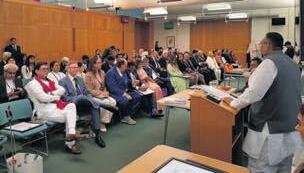

Organiser Dr Diwakar Sukul welcomed the guest of Honour- Ramesh Arora, renowned Hotelier; Dr Linda Spedding, International lawyer and advisor; Sandeep Marwah, founder of Noida film city; Dr Ajay Desai, VP India WBR and Rahul Shah, Chairman Gajali Group India.
The World Book of Records honoured Rahulbhai Shah, Chairman Gajali Group for being a pioneer in revolutionising the agriculture industry through the invention of organic fertilizers and providing a replacement for DAP and Urea to the world. In the introductory speech about Bio-Organic fertilizer, Mr Shah said, “The Mission of my Bio-Organic fertilizer is to strengthen the roots of our Mother Nature and bring revolution in the agriculture sector all over the globe. If we want to develop green life on earth, chemical-free fertilizer is the only option and my product is the answer to the replacement of DAP and Urea.”
While talking with Asian Voice, Rahulbhai Shah explained, “With the use of 100% Organic Fertilizer one can bring out more yield with enhanced food value of the end product of Agriculture. This enhanced food value of the products will add-on to the life of people all over the globe to make each individual healthier to enjoy the full life
span. Due to the non-utilization of chemical fertilizers, the possibility of our health hazards will come down to zero levels. Thus, good health and the full span of life of every citizen will be assured.”
What a are t the b benefits o of B Bio O Organic fertilizer?
Rahulbhai said, “My innovation ‘Grandharvest’ is 100% organic, no chemicals are there. Not only it
“Bio Organic fertilizer increases agricultural productivity while maintaining soil health and environmental safety. Also, it prevents pollution and the environment. Its results are very promising and its study shows a substantial increase in the yield of crops unlike after using ordinary fertilizer. The ‘Grandharvest’ Activator successfully converted distillery spent wash into Organic fertilizer and thus converted fertilizer is more economical, environmentally friendly and farmer-friendly.”
increases land fertility and yield but also enhances the taste of fruits, vegetables and foodgrains. Reduction of the overall cost of production compared to the other commercial agriculture products. Organic products get good returns in the market. Regular use of ‘Grandharvest’ liquid organic fertilizer will make plants so healthy that it shall resist many diseases to the
He further added, “The product was used and trials were taken in several Indian states and several countries. After a successful trial in the United Kingdom, The World Book of Records appreciated our innovative work and honoured us by recommending our nomination to the World Book of Records.
“The Grandharvest Bio-Organic Liquid Fertilizer is already in use at various places in Maharashtra and Gujarat. Using the latest technological advancements, we produce the finest fertilizers and farming pesticides. The shelf life of our products holds longer than any other, which is our main USP.”




The Grandharvest fertilizer products are very unique and the only ones of their kind as being completely organic without adding any chemicals and manufactured from natural resources. The most of the plant based ingredients used in the fertilizer are naturally grown in the wild without human interference. Hence, it retains all of its natural properties by itself. We have identified such plants & chosen them for our products. Most of the plants grow abundantly, and the sourcing of such plants is not at all an issue so that we can produce and deliver products on time.
Our bio-organic liquid fertilizer and root fertilizer encourage the formation of humus in the soil by promoting progressive oxidation by the addition of oxygen from oxygenated water, lowering the groundwater pH values of the water in the soil and exposure to soil temperature. Soil humic substances are quantitatively and qualitatively the most important components of soil organic matter, affecting the health and productivity of the soil. If one uses these products regularly, the soil becomes more and more fertile and reverts back to the prechemical and pre-synthetic fertilizer era.

The Grandharvest Bio-Organic Liquid fertilizer is well balanced with macro and micro nutrients, minerals and other essential trace elements required for plant/crop growth. This fertilizer is environmentally friendly, farmer friendly, and nontoxic, safe for both flora & fauna and there is no need to use a mask or any protective device while spraying. It not only increases agricultural productivity but also enhances the nutritional values of the crop yields. With this fertilizer crop grows abundantly and it is 100%
organic crops, hence the first crop itself becomes organic with the help of our fertilizer. Soil enhancement and soil fertility are also observed after using this fertilizer. An amazing faster growth rate with bushy, lush and dense growth is observed after using Grandharvest Bio-Organic Liquid Fertilizer. It enhances water retention in the soil thereby reduces water consumption by 15 to 20%. It also enhances crop immunity and stands against damages due to extreme climatic conditions of about 15 to 20% like heavy flooding or draught observed during field trials, thereby helping the farmer against financial loss as compared to other conventional fertilizers. It also reduces harvesting time by 10 to 15 days, thereby giving farmers an additional one cycle of vegetable crop per year as a bonus due to Grandharvest organic fertilizer. This fertilizer can be used on almost all types of crops like, grains, pulses, sugarcane, cotton, flowering & fruit -bearing plants etc.
replacement for DAP & UREA, thus reduces input costs and increasing savings to the farmer and also save foreign exchange for the country. It has been observed that after using this fertilizer the heavy metal contents & 127 pesticide residues as per Jaivik bharat, are drastically reduced in the crop yields and laboratory tests carried out on such crop yields confirmed the same, which passes all the international standards for
The organic fertilizers are coordinated with the natural requirements for environmental sustainability and continuity. Their biodegradable nature continues the nutrient cycle and supports natural bio-chemical activities. The mineral and nutrient breakdown of organic fertilizers takes time, and more than half remain on the soil after the first year, slowly breaking down to feed

Innovative. Only One of its Kind. Proven Efficacy
• The product was used and trials were taken in several Indian states and several countries.

and nourish the soil. Thus, organic fertilizers ensure that the soil stays fertile for many years.
We have developed an organic product, Grandharvest Root Fertilizer, to be employed for organic farming, which has balanced nutrients for crops and enhances soil fertility and environmental sustainability.
With the use of Grandharvest Root Fertilizer, the soil is constantly conditioned and rejuvenated, thereby enhancing soil texture, drainage and aeration. This root fertilizer supplies plants with sufficient nutrients to achieve optimum productivity while also rebuilding soil fertility and ensuring protection of environmental and natural resources. The Grandharvest Root Fertilizer not only improves and conditions the soil but also enhances the yield and health of the plants. It can be used for almost all types of crops.
The Grandharvest Activator is one of the great organic products, specially designed and developed for the purpose which neutralizes the harmful effluent, plays a greater role as a catalyst to trigger and enrich the activities of the Organic Liquid Fertilizer.
Green Revolution Our Quest: Improvement For People Universally


The Grandharvest Neutralizer is the only one of its kind that neutralizes heavy metal contents and pesticide residues in the crop
• After a successful trial in the United Kingdom, The World Book of Records, appreciated our innovative work and honored us by recommending our nomination to the World Book of Records.
• The Grandharvest Bio-Organic Liquid Fertilizer is already in use at various places in Maharashtra and Gujarat.
yield from the very first season after using this product along with conventional farming with chemical fertilizer.
Mr. Rahul Shah is the founder and chairman of the Gajali Group of Companies, a Mumbai based business establishment engaged in the manufacturing and marketing of Pharmaceutical products, Cosmetic products, Agro products, Organic fertilizers and Organic Activators etc.

Started as Gajali Cosmetics in the year 2003, we were initially manufacturing colour cosmetics like foundations, nail enamels, nail polishes, eye shadows, nail paints, powders, lipsticks, concealers etc. Eventually, we introduced Body Lotions, Body creams, Shampoos, Pharmaceutical Products and many more. Started marketing our products locally and then expanded to international markets. As the business grows, the requirements for other products also grow along with existing products. Our customer base with our business partners and business associates are present in more than 30 countries and has asked us for more and more products with different propositions. One of our groups, Gajali Lifescience LLP, is engaged in Pharmaceutical products, FMCG products, Agro products, Organic Activators, Organic Fertilizers and many more.
“We have sufficient technical support as well as technical teams to carry out new innovations and new products. We are marketing our products in local markets as well as international markets.” Rahul Shah, Founder, Chairman Gajali Group
Gajali Group A- 1808, Kailas Business Park, Off LBS Marg, Parksite,Vikhroli (West), Mumbai –400079, India. 022-25173482/83/98 info@gajali.com / Gajali.com





Kohli grew up in Delhi and now lives in Washington, D.C. She has an MA in Creative Writing from UEA, and a BA in Economics from Shri Ram College of Commerce, Delhi University. Her work has been shortlisted for several awards. Her story ‘The Outing’ was shortlisted for the Bristol Short Story Prize, and ‘One Hour, Three Times a Week’ for the Fish Short Story Prize. She talks to ABPL about her latest book ‘‘The House Next to the Factory’
Sharing the idea behind the book and its interesting title, Kohli said, “The House Next to the Factory is the story of an ordinary middle-class household unfolding on the canvas of a changing India. Each chapter revolves around a family member or someone connected—a servant, tutor, cousin or lover. Their stories peel through the complexities of class, caste and culture, and evoke the loves and tragedies of everyday life. The house is central to my book, as the formative years that the family spends there shapes the rest of their lives. It is the source of their loneliness and aspirations, the seat of their smallscale ambitions.”
As a debutante author, Sonal experienced all of the challenges of a first-time writer, especially since she has a background in economics as opposed to literature. It was only later in her writing life that she studied creative writing. “Self-doubt was the biggest block. Often I found myself questioning my skills at storytelling, my aesthetic, my knowledge of the craft, and my depth as a reader. I strove to find the balance in the translation of lives lived in Hindi but expressed on paper in English,” she said.
According to her, the book is a great read for the diaspora because of its descriptions of day-to-day lives— a mother shelling peas, a home tutor being offered a samosa and jalebi as a special treat, a servant dusting the furniture, two brothers eating roadside kebabs and listening to ghazals on the car’s stereo. She said, “I hope for the book to take the diaspora back to the landscape that they left behind. It may even give a glimpse of what their own life, lifestyle or life story might have been had they stayed back. They may identify with the character of Hema who moves to England with her family, her first encounter with snow and life in a small English town, and how a friendship that she’s left back continues to tug at her heart. The book’s narrative spans three decades, and I hope for it to reveal the changing Indian landscape—social, economic and political—and its evolution over time. For the second and third-generation diaspora, who was born and raised in the UK, the book might be a way to see the world that their parents or grandparents came from, offering an up-close view of the life, traumas and triumphs of that place.”
Commenting on how the decades between 1980-2010 changed, Sonal said, “The India of 1980 was young, newly independent, still largely agrarian, a society based on a socialist model. The industries were nationally owned, hugely bureaucratic, and often running in losses. But the emerging and aspirational middle class of this newly independent country wanted a modern life, complete with a colour TV, a washing machine, and a car beyond the ubiquitous Fiat and Ambassador. This inspired a slow, gravitational pull away from Nehru’s principles of socialism towards a market economy. Then came the economic crisis of 1991 leading to reforms and liberalization that changed India as a market and an economy. Suddenly young Indians had access to all the Nikes and Reeboks they wanted, things they had only seen their NRI cousins own. By 2010 India was in the race to be an economic power. I wanted to capture these changes in The House Next to the Factory and hope readers will enjoy what I’ve tried to do.”
The House Next to the Factory by Sonal Kohli is published by Swift Press on 3 November as a £12.99 hardback



















Chowk, a part of old Delhi brimming with tropes of Indian heritage is a place that offers the most loved and unmatched shopping experience for shoppers across the country. Sunny Kapoor is an Indian fashion entrepreneur who runs a leading wedding wear business in the heart of Chandni Chowk in Delhi. What was started by his father Mr Suresh Kapoor in 1984 (when he came to Delhi from Punjab amidst turbulent times for Punjabis and Sikhs in the country), in a store as small as 100 square foot has today evolved into Meenakshi Creations. Chandni Chowk’s leading wedding wear brand that boasts of an area of 6000 square feet in the fashion hub. Speaking to ABPL, Sunny Kapoor said, “Our business offers women’s ethnic and fusion wear. Our primary clientele is upwardly mobile, middle and upper middle class. Our buyers hold high aesthetic values and aspirations, but still consider value for money as a very important aspect.”


When Kapoor’s father began Meenakshi Creations, he had limited exposure to women's ethnic wear and fusion wear. He personally sat down with the karigars (weavers) to draft designs

and over the years, the aethetics evolved ten-fold and today, their brand is a name to reckon with in terms of fashion.
The Bollywood influence Indians are obsessed with weddings and traditionally believe in saving wealth for their big day. When it comes to shopping for wedding wear, people have aspirations of wearing designer label. But then at the same time, whether or not you can afford

something like you would still want to wear something similar and save upon as much money as possible.
Kapoor said, “I've been in this industry for almost two decades now. This is something that I always keep telling future brides to be even when I come across them. In wedding shopping, what really matters is what suits you best. A bride must decide which occasion she's looking for, rather than what's trendy, but most of the times these lines get blurred and trends and

fashion industry tend to confuse these two terms. So what's trendy and what a Kiara Advani or Alia Bhatt are wearing, might not be the best fit for your function or for your personality or for your occasion.
“Style is very personal. And the best thing about shopping in Chandni Chowk, especially shopping with us is that we custom make things for the client. So it's more of initial 10 minutes going understand understanding what the client is actually looking for and what their personality is more about. And then finding them a custom solution or if it is not there, then customising the design to suit them.”
The fashion entrepreneur mentioned that most of the designers in India do not customise outfits for brides, and some even end up borderline body shaming in this practice of selling only aparticualr size of clothing only. “That's a subtle way of saying that your body type is, we don't cater to your body type or we don't get to do a certain color or a certain class,” he said.
Sunny feels fashion is more intuitive. His store in Chandni Chowk at any given point of time houses over 2000 art designs ranging from engagement outfits, shararas to lehngas, ancillary clothes, sarees and more.
Speaking about the paradigm shift in fashion choices in wedding wear post the pandemic, Sunny explained that now the guest lists
have become smaller, therefore a family that would not only shop for the bride but also purchase for the family, is now focusing only on the bride’s outfits. What has also become the trend of the season is that brides want to replicate the looks of Bollywood actresses from their weddings, irrespective of the fact whether that look would suit them or not. Commenting on this, Sunny suggested that our choices shouldn't be limited to personal perception.
He explained, “But I think it is heavily influenced. And I guess that has more to do with the exposure. When it comes to NRI customers, because most of the people are wearing western wear on a routine, they are perhaps more influenced by Bollywood when it comes to what they're exposed to. We have so many clients from the UK,
Canada, US, and Dubai giving us a call.”
Six months in advance Meenakshi Creations schedule a video call with brides to be across the globe and guide them through the process with the best possible outfits for them. Kapoor and his father have been resorting to a unique technique which many big designer labels haven’t cracked in India, by creating a dummy outfit out of a different - lighter fabric to suit the body fo the bride, which they believe helps them create a more well fitted bridal outfit for a bride than the usual obsolete methods.
In the era of brides going in for non-conventional colours like ivory, lilac and pink for their big day, Sunny said that even today, 50% of the brides still go for traditional shades of red or coral. “Every woman has a certain mental image of how she wants to look on her wedding day. No matter what trends are, at the end of the day, it's about closing your eyes and thinking okay, I have to be in a certain way.”
When asked how the diaspora can shop at Meenakshi Creations, Kapoor mentioned that they can get in touch with his team via Instagram and then there’ll be a series of video calls and discussions to reach the final stage of creating the outfit. Sunny said that if a bride wants to have a hassle free experience of buying her wedding dress, it’d be best to get in touch atleast 3-6 months before the wedding.

@meenakshi.creations



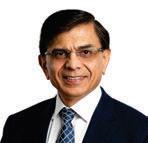






























One of the UK’s biggest celebrations of Indian culture returned to London this October after a Covid-19induced hiatus of 3 years promising a colourful extravaganza of cultural performances, fashion shows, Antakshari competitions and other traditional entertainment from the Indian sub-continent as well as dozens of stalls selling a wide array of goods from India promoted specifically by first-generation migrant women entrepreneurs in the UK.

women – as a way of encouraging entrepreneurship and a sense of sisterhood amongst its members, many of whom often arrive in the UK as “dependent spouses”.
The event offers women a chance to create their own niche and develop their entrepreneurial skills as well as showcase the range of talents they offer.
As in previous years, there were stalls selling a range of goods –from traditional Indian handicrafts from the four corners of the subcontinent to jewellery and ethnic wear. In addition, of course, there was a range of options to tempt your palette – authentic and mouth-watering treats for the foodie in you, freshly prepared by our members from Kerala to Kashmir.
India’s cultural heritage – in all its colourful glory – was on display with traditional dancing and singing performances and an Antakshari competition which has, in previous

ones both in the UK and in India and in many heart-breaking instances were unable to either be by the side of loved ones in India or perform last rites owing to the
The event took place at the Camden School for Girls on the 8th of October 2022.
India Bazaar was launched in 2016 by Indian Ladies in the UK –the UK’s largest community group for first-generation migrant Indian


years, turned out extremely competitive.
This year’s bazaar added poignancy, seeing as it follows the long global winter of the pandemic. Countless members have lost loved

worldwide travel restrictions. A special remembrance area was set aside to pay tribute and remember those that we have lost over the past two years and a special prayer will be offered in their memory.
All proceeds from the event go towards the work that Indian Ladies in UK have been doing since 2015 –assisting first-generation migrant women who fall victim to domestic abuse and abandonment. ILUK remains a volunteer-led Not for Profit organisation that has, since its inception in 2015, helped countless victims find shelter –often in the homes of ILUK members – and a range of assistance, from legal advice to support with visas.


Anupa Singh, who was a part of India Bazaar this year, has roots in Rajasthan. A mum of two beautiful kids, she has been staying in London for the past 13 years. Speaking to us, Anupa said, “I have always been passionate about art and handicrafts from my childhood. This passion and my dreams gave me the motivation to start my own


According to her, elements signify the different substances used together to create the unimaginable product and artwork. She has collaborated with artisans who come from different cultures and heritage in India and designed exquisite products with their unique talent and skills.

“I am a vital part of the community that helps promote awareness of Indian heritage in the UK as well as across the globe. In the past 12 months, my products found a home all around the world and proudly showcased the heritage and diversity of Indian culture and talent. The feedback I have received from my customers is extremely positive and some of them have shown great interest in learning more about the Indian heritage through my products.
Her products are available on Etsy store which is curated from rich and diverse products made in India.


Adhilakshmi Ganapathi based in Peterborough also participated in the bazaar this year. Speaking to ABPL, Ganapathi said, “Living

abroad comes with a wide range of challenges, though we all go to a foreign country with a dream and expectation of a better lifestyle. The lack of a robust community support system, similar traditions and enthusiasm to celebrate festivals and important occasions can be very isolating and intimidating. However, in many parts of the world, Indians have managed to build a community and identity for themselves. I am fortunate to be part of one of those Indian communities which celebrate every festival, so you never miss home. Living in the UK for over 15 years, as a firstgeneration migrant, I am fortunate to have gained a lot of good friends, who are no less than family, with whom I am fortunate to replicate all the rituals and celebrations like how they would
be done back in India.
“When it comes to any festival, one thing we all Indians look forward to is shopping for Indian jewellery. This inspired me to start my small venture of Indian fashion jewellery; Crystal Peacock Jewels. With enormous help and encouragement from family and friends, I was able to bring my dream to reality. As my business tagline says, ‘Unique like You’, every product of mine is unique and has got it is own statement. When it comes to choosing the products, I personally choose every item and source it from all over India. All my products are of high quality, imported directly from the manufacturers, and at times source some handmade jewellery directly from the very fine artisans, in turn helping the artisan directly. I make sure my customers get good value for the money they spend on Crystal Peacock jewellery while not compromising on quality. During the exhibitions, I choose products based on the target consumers and make sure to depict our Indian culture through my collection of Crystal Peacock jewellery.”

❖ Peeled Baby Potatoes- 1 kg chat masala- 1 tbsp coriander powder- 1 tbsp degi mirch- 2 tbsp Brown onion- 100 g Ginger garlic paste- 1 tbsp Water- 1 litre
❖ Salt - to taste Sunflower oil - 50 ml Corn flour- 200 g

❖ Mustard oil- 100 g Fennel seeds crushed- 1 tsp. Chilli flakes- 1 tsp

❖ Cumin roasted crushed- 1 tsp Coriander seed crushed- 1 tsp Black pepper crushed- 1 tsp Green cardamom crushed- 6nos
❖ Cloves crushed- 4nos Kashmiri red chilli paste- 3 tbsp Fresh coriander chop- 1 tbsp

❖ Step one
Prick the baby potatoes and cover well in sunflower oil and garlic paste. Sprinkle all spices over them and leave to marinate for at least one hour.
After marination, add water and bake the potatoes in the oven for 45 minutes at 160C. Remove from oven and set aside to cool, before dusting the potatoes with corn flour.
Deep fry the potatoes until golden brown, then leave to rest.
❖ Step two
Place all step two ingredients into a mixing bowl and whisk until consistent.
Place the fried potatoes into the mixture and leave to marinade for 15 minutes, before baking in an oven for 5 minutes at 180C.
Remove from the oven and serve hot.
My mother's Jaipuri Baby Aloo is her own take on a recipe that would usually include chicken. It comes from the region of Rajasthan, which is famous for its grand palaces, kings and queens and its rich, meat-heavy cuisine.
Much of India follows religions that dictate vegetarianism, and though I wasn't vegetarian myself, I often found that there was too much meat in the diet whenever we lived there. So, my mother began to play with the recipe until she came up with the Jeipuri Baby Aloo just for me.
Like all regions of India, the cuisine is heavily influenced by the availability - or scarcity - of ingredients. The Bedouin tribes of Rajasthan would hunt for their food, which is why meat plays such a huge role in their traditional dishes. But it was also a very 'dry' state. Water was so scarce in the region that they wouldn't waste it in sauces or gravy, so dishes from this part of India tend to use delicious mixes of spices and are served without sauce.
My mother's recipe for this also changed as we moved throughout India, particularly as the size of potatoes changed, from the large potatoes available in the south to the smaller ones available in the north.
I always preferred it cooked this way, with smaller potatoes, served with the skin on. It takes me back to dinners with my family and my mother's wonderful cooking.

❖ Cauliflower sauce
❖ Oil sunflower- 100 g bay leaves- 2nos cinnamon stick- 1 small pcs
❖ Green cardamom- 5nos Mace- 2nos Ginger garlic paste- 80 g Coriander powder- 1 tbsp Degi chilli powder- 1 tsp Turmeric powder- 1 tbsp Kasuri methi- 1 tsp Cumin powder- 1 tsp Yellow chilli powder- 1 tsp Water- 500 ml Brown onion paste- 500 g Yogurt- 250 g Almond paste50 g Tomato paste- 100 g Fried cashew paste100 g
Water- 2 lit Saffron- 1 g Salt- to taste Desi ghee- 2 tbsp Butter- 50 g Fresh cream- 5 tbsp Garam masala- 1 tsp Cauliflower


2 litre sunflower oil (for deep fryer) two cauliflowers, each cut into 6pc Mustard oil- 1 tbsp Kashmiri chili powder- 1 tsp Ginger garlic paste- 1 tbsp Hung yogurt- 150 g Salt- to taste
Kasuri methi- half tsp Garam masala- half tsp METHOD
Take a heavy bottom pot and add the oil, cinnamon stick, green cardamom and green chillis. When the spices start crackling, add the ginger garlic paste and cook for 5 minutes.
Add the Degi chilli powder and coriander powder, but be careful to ensure it doesn't burn.
Add the brown onion paste and tomato puree and cook for 10 minutes on a low heat.
Add the whisked yoghurt and cook for a further 15 minutes on low heat.
Add almond, cashew paste and water, and cook for another 15 minutes on low heat, before adding the salt, saffron, garam masala, cream and desi ghee and mixing well.
For the confit cauliflower, cut the cauliflower into florets and deep fry or air fry for 6-8 minutes at 140C. Remove any excess oil by dabbing with kitchen roll.
Make a marinade of Hung yoghurt mixed with chili powder, garlic paste, Kasuri methi, Mustard oil and Garam masala. Mix the ingredients until the marinade is thick and slightly sticky, then add the fried cauliflower and toss gently by hand until completely covered.
Bake in the oven for a further 8 minutes at 200C, before liberally pouring the sauce over your cauliflower and serving hot.
This take on the Cauliflower 65 was created by Colonel Saab's head chef, Sohan Bhandari and was a favourite of mine from the moment I first tried it.
In India many of our religions promote vegetarianism, so ingredients such as cauliflower are extremely common, but the way in which they are prepared changes hugely based on geography.
In Southern India there are coastal regions, which means palm trees and coconuts are plentiful, and that is the only area where cooking with coconut milk or oil is common.
Some believe this Southern Indian dish was invented in 1965, others say the dish got its name from the number of chiles in it and many insist 65 was the menu number for the original dish.





















Inspired by the long legacy of his family, the travelling experiences of a family with an army background and the extensive knowledge of his parents of Indian cultural heritage, Roop Choudhary invested his energy into building more brand equity for their Palace Hotel - Noor Mahal. After the humbling success of the Noor Mahal Palace Hotel, it was time to work on making his dream into
reality.
Speaking to ABPL, Roop said, “It was always a dream of mine to recreate the same magic of the Indian royal experience and warm hospitality on the global canvas. This is what motivated me to curate Colonel Saab. Recreating the amazing regional



Indian flavours and presenting them to food lovers globally, showcase the richness and the divinity of Indian flavours. There could be no better place than London to present our authentic Indian flavours as the brand ambassador of our rich Indian cultural heritage.”
Choudhary’s customers have told us that they absolutely love the decor of the restaurant Colonel Saab besides the food. Reacting to that, Roop said, “While ideating for Colonel Saab, it was never an intention to only showcase the Indian cuisine. We wanted it to be an immersive experience of the richness and vibrancy of Indian cultural heritage. Each nook and corner of the restaurant was designed keeping this in mind. From the colour schemes to the lighting to the furniture and even the intangibles that is the way we serve our dinners all embody Indianness.”
“To complete this experience, we decided to share our love for artwork and antiques with our



diners. Every piece displayed at Colonel Saab has journeyed through time and has a different flavour of cultural heritage. Marvels of their time were collected from different parts of the land. Hand-woven Persian carpets from the silk route, 17th and 19th Century Tanjore paintings from Southern India, magnificent temple doors from Gujarat, and the exquisite Asprey Drinks Bar of Maharaja of Patiala, among others for us showcase the grandeur and fines of the Indian royal era. Something that our diners also appreciate.”
According to him, cultural heritage is an expression and the essence of our being. What we are today is a reflection of what we used to be. Indian cultural heritage is deep and wide, with a rich legacy gifting us with so many talents, sciences, arts, knowledge, literature and lifestyles. It is

almost impossible to define Indian cultural heritage in a few words.
When asked how different is it to bring an Indian restaurant alive in the UK than in India, Roop Choudhary said, “The love for food is the same everywhere, but the perspective is different. In India we know Indian cuisine, we have the knowledge and so it is difficult to wow dinners with anything less than exceptional food. In London, it is very different. Though due to exposure many people know about Indian food and flavours still a lot of it is a mystery to them. There is a lot of curiosity about Indian cuisine and a lot of enthusiasm to try the dishes. Indian food experience is considered fine dining and rightly so. It is also amazing how Indian dishes are suited perfectly well for people who have special dietary conditions such as glutenfree or dietary choices such as vegan. Indian restaurants serving good food are kept busy with enthusiastic food lovers.”
He further added, “Indian cuisine and cooking has developed, refined and evolved over centuries. It is as much an art as a science. We need to cherish this and follow the traditional wisdom of this discipline. Eating seasonal, the right use of spices, various traditional cooking techniques, etc all need to be nurtured and practised for a better and sustainable living.”






































 Nischal Sanghavi
Nischal Sanghavi
is the practice of abstaining from the use of animal products, particularly in diet, and an associated philosophy that rejects the commodity status of animals. An individual who follows the diet or philosophy is known as a vegan.
Among consumers in the United Kingdom, there is a growing interest among residents to adopt veganism. These dietary choices are becoming so popular that approximately 3% of people in the country have already identified themselves as a vegan. Those following a vegan diet do not consume any animal-derived food products or ingredients. The idea of eating no meat is much more widespread among younger consumers than among the older generations. Meat-free food consumption will thus become even more important in the British market in years to come. The UK market for meat substitutes is already worth over 500 million euros, making it the largest in Europe.


According to Dr Keyur Buch, a consultant orthopaedics and social philanthropist in the UK and India, “Veganism was coined in the 1940s in the UK and it excluded milk and eggs but kept the rest of the vegetarian diet. Veganism is now a well-known and well-marketed concept, especially in the western world.”
“Avoiding animal products has lots of advantages. First of all, it is being kind to animals. Natural vegan food is easier to lose weight and has less risk of diabetes and cancer as opposed to a diet containing meat.” However, Buch who also has a wide experience of working with NHS says, “the difficulty with veganism that seems to be sweeping across the UK is that it is becoming a commercially exploited concept, due to which manufacturer has now
started marketing a lot of processed vegan food, which may not be beneficial for health. For example, Tofu may be harmful to some people. Also not consuming milk might cause a lack of Vitamins, Calcium, Zinc, fatty acids etc. which could be serious deficiencies. Of course, some of these deficiencies could be countered by selecting certain kinds of vegan foods like algae, mushrooms and things exposure to the sun. The only issue is that the 1823 age group people who are fast getting into veganism these days do not have the knowledge and depth to access this alternate range. Veganism is not bad but, going into it without the proper knowledge could be harmful.
“In addition to this excessive obsession with eating food is a psychological disorder. I have found many such examples of this kind of person in the UK,” says Buch.
Architecture student Yuvika Gupta says, “Initially she only knew what being Vegan meant, but she was as curious as to why people would go to such lengths to avoid dairy and other stuff. Later, she found it interesting and did some research for a couple of months. She also saw a lot of videos and documentaries and saw statistics on how much these things affect the environment. Finally, it all came down to love for animals and love for the environment/ planet. So before
she could completely commit to being vegan, she thought of trying it out. There’s a thing called Veganuary when the new year begins, you start practising being vegan and if you can successfully go the whole January being vegan, you commit to it. Actually, she did find some
difficulties finding things completely dairy free in the beginning but things seemed to go easier eventually. Yuvika has been a pure vegan for the last 4 years and according to her, she doesn’t even miss dairy. Though she is aware that eating dairy products could be healthy in many ways, she has decided to stick to veganism instead.
It seems that Veganism has been around for a long time now, but probably this is the time when it is gaining the highest popularity, especially in the UK. After the covid pandemic and the probable origin of coronavirus traced to animal carriers, more and more people are actually influenced to adopt veganism as a way of life, for their own health, if not for the love of animals and the environment. According to a report the total number of vegans in the world has already crossed 96 million and they are growing at a 9.6% rate.

Did you know there are approximately 96 million Vegans in the world?


Deepavali is the festival I eagerly wait to celebrate every year! It is my favourite festival. It is the Hindu festival of lights and alls during the months of October/November as per Hindu Calendar. We light up little oil lamps made from clay (Diyas) and celebrate by bursting firecrackers and firework display in the evening. In the dark night, the surrounding environment and the sky will get brighter by the lights of diyas and fireworks.
The day before Diwali is called Naraka Chaturdashi. The demon Narakasura was killed by Satyabhama (wife of Lord Krishna) on that day. Goddess Lakshmi (the Hindu goddess of Wealth and Prosperity) is worshipped on Diwali day.

Deepavali is called the festival of lights. It is one of the important festivals celebrated across India, I heard from my mother that Deepavali was celebrated by lighting Ayodhya - celebration of victory of Sri Rama over the Rakshasas and bringing Sita home. Sri Rama and his brother Lakshmana were in forest for 14 years during which Ravana forcefully took away Sita. Ramayana is the how good won over evil .
As a kid, I remember one Deepavali I celebrated in Hyderabad in 2018. Our house was decorated with flowers- my aunts, uncles and other family members were there. Amma bought me and my sister pattulangas. There was a lot of food cooked. I remember this Deepavali because we packed food and distributed to old people on streets and near temple. We went to ammamma"s house - we burnt a few crackers there.
In the evening. Amma bought a lot of diyas and lighted up in front of the house. Everyhouse in our colony was full of lights. In the evening People started bursting crackers. There are a lot of crackers - one was like a cone and fire went high when we lit. It was fun .


In London, we celebrate with a few friends Goda aunty, Raghu uncle, Sincy and Vivek, and Meera aunty. We burnt some pencil sticks in the evening. My Amma makes lot of rangoli inside home and lights clay diyas.
Amma says it is important to remember not to hurt any animals and injure when we are burning crackers.
According to Ramayana, Lord Rama (avatar of Lord Vishnu) returned to his kingdom after fourteen years of exile and after defeating the evil King Ravana, who abducted Rama’s wife, Sita. On their arrival to Ayodhya, people welcomed them with joy by lighting lamps.
Diwali symbolizes the victory of Good over Evil. Celebrating the festival with the entire family, relatives and grandparents in India is more joyful. We get up early, apply oil and take bath, wear new traditional clothes. The homes are decorated with rangolis and pooja is performed along with the family. Grandparents and family show a lot of affection, and we share sweets with our friends and family. I get to buy my favourite fireworks, sparklers!
Temples perform special poojas on Diwali. All the homes are beautifully lit up and the streets look very vibrant with lights all around.
The message of Diwali is togetherness and joy. It is spread by greeting each other "Happy Diwali".
Mira Gandluri Age: 9 years

Wokingham Borough Council



Diwali, or Deepavali as my grandparents call it in India, is one of my favourite festivals because we decorate our house with flowers, lamps, and strings of colourful lights. We celebrate the festivalwith our friends and family over three days.
A few days before the festival, we clean our house and get things ready for the celebration.I enjoy going to the local supermarket with my dad and brother to buy sparklers and flowers. My mum makes sweets such as halwa and gulab jamun,which we share with our friends. Last year, we made lamps out of clay and decorated them with beautiful designs using paint.
On one of the days during Diwali we pray to goddess Lakshmi. I like playing with the sand like powder to makerangoli with my mum, a colourful design on the floor in our living room and decorate it with lamps.I enjoy wearingtraditional clothes and lighting sparklersand swirling them in different shapes along with my friends.My grandparents from India always make a video call to show their streets which are full of lamp decorations and the fireworks in the sky.
I danced in a community event before the pandemic with my friends from my dance class and watched other cultural programs of dance, music, and drama. I am veryexcited to participate in the programsthis year and celebrate with my friends.
I wish you all a very happy Diwali and hope you enjoy with your family and friends.





It wouldn’t be hard for a foreigner to recognize the luminescent aura in the unknown streets of India during the festival season of Diwali. Popularly known as the “festival of lights”, Deepawali or Diwali welcomes in the season of winter with gladness, happiness, shopping, gifts, and a slew of new events and festivals, including Dussehra, Dhanteras, Govardhan Pooja, Bhaidui and Narak Chaturdashi. Celebrated in the Hindu month of Kartika, the essence of the celebration of this festival lies in putting up the motto that it carries up on a pedestal. It represents the ‘triumph of light over darkness’ in the spiritual realm and reminds us of the path that an individual should trudge upon to ultimately achieve this goal.
Hindus commemorate brotherhood and sharing by celebrating this festival that auspiciously marked the return of King Ram of Ayodhya after 14 years of exile and the defeating of the demon king Ravana after fierce bloodshed on the battlefield- alluding to the fact that the illicit path always ends up destroying that individual.
A celebration of this magnitude- usually held in the months of October and November ---would mesmerise you. You would find yourself surrounded by the wonderful aroma emanating from freshly prepared food that would fill the neighbouring streets during the festivity and homes would be dearly engulfed in pleasant floral smells. Delicacies would be prepared and devoured and as a sign of camaraderie, guests would be invited to households for a joyous celebratory evening.
All in all, it’s a radiant 4 days of luminosity and joy to celebrate the right morals that become the stepping stones for an individual progressing into the future.
Luv and Kush Murudkar 12 years, Slough Diwali was always something close to us. Diwali in 2009 was on October 17th, meanwhile our birthday was a merely 10 days after, the 27th. Us twins now being 12 means we have experienced 12 ecstatic and vibrant Diwalis.


To us, Diwali is a joyous festival where our family and friends come together to celebrate this momentous occasion. We remember how excited we were to hear the loud fireworks shoot up into the air, the popping and all the colors in the sky were all just idyllic. For most of our life we have also celebrated Diwali at the Slough Hindu temple. When we go to the temple we always light a diva and a lot of fireworks go off at night. In the mandir we participated in a play that displayed the story of the Ramayan and how Ravana kidnapped Rama’s wife, Sita. We acted as Jataayu and Hanuman as well as some of our other friends and members of the mandir having a role of their own.
One of our favorite years we celebrated Diwali was in 2019, when Diwali was on our birthday. To make it even better, we went to India to celebrate both our 10th birthday and the festival of light. We first celebrated our birthday with our family and friends and then to end the night we lit an abundance of fireworks off. My favorite Diwali moment is when I got to set off my own one! Me and my cousins spent the whole night setting off and viewing fireworks spiraling and bursting in the sky.
At our home we also put a lot of lights up which always shine bright at night. Also, our mum decorates our home with lively designed rangolis. On Diwali our family choose out the new and brightly colored kurthas and sarees to wear when we go out to celebrate the bright festival.
“May the festival of joy become more beautiful for you and your family. All your new ventures get success and progress. Happy Diwali!”



Diwali, sometimes spelt as “Deepawali” is a festival celebrated in Hindus, Jainism & Sikhism. This name has been derived from Sanskrit, which means “row of lights”.
I remember every year when we celebrate Diwali my parents used to get me new pair of clothes, aromatic laddus & other cooked delicacies. The most special part of Diwali that I like is show of fireworks.

Not only it is fun, but we also believe the fireworks symbolises power of peacefulness over darkness & good over evil.

As a Hindu, I did a play called “Ramayan” with my classmates. I was dressed as Lakshman the brother of Ram who fought against daemon Ravana to bring back “Devi Sita”.
Ram & Lakshman fought this war in Lanka which is now called Srilanka & saved Sita. They brought her back to Ayodhya, which is also known as Ram’s birthplace.
On the return of the princess Sita, the people of Ayodhya lit earthen lamps & welcomed Sita. This day is then celebrated across the globe by the Hindus as Diwali.
My mother dresses herself in saree, I & my brothers & my father put up fancy Kurta & pajama.
My nani, from India instructs my mother to do “Lakshmi Puja” & to offer her sweets. It is believed whoever does Lakshmi puja, they receive lots of wealth from God but my father believes in hard work. But I & my brother usually discuss & come to an agreement that prayers & hard work both together give us prosperity.

There are people who meet success and happiness in life and then there are people who propagate happiness after meeting success. There are people who de ine success as earning enough to buy the material pleasures of life, while there are few of the special people for whom success is to give back as much as they can to make the lives better for those who need it the most. Some people call these special people as the ones sent by God to this planet to make a difference, while for some people whose life have been in luenced, these people are the God themselves.
Jaykant Shah is a living example of what humans can do to make this world a better place for many others. Hailing from a modest village ‘Mokshi’ in India’s Gujarat state, Jaykant Shah’s father migrated to Tanzania, Africa. Today Jaykantbhai is a successful and respected businessman on the British Isle. To know that the family arrived penniless in the UK, it is a rare achievement in this huge competitive world. Jaykantbhai explored newer heights with time during the cycle of life, but his heart always looked forward to do something for fellow humans who really lacked even the smaller things in life.
The turning point came when Jaykantbhai’s loving wife Brindaben succumbed to the painful disease of cancer. The agony of Brindaben’s sudden demise gave Jaykantbhai the fuel to follow the path less travelled. In keeping with Andrew Carnegie’s philosophy ‘Gospel of Wealth’, Jaykantbhai started his never‐ending marathon run to ensure that his wealth found its way to where it was needed the most.
donations together with the family members for good causes that would make the world a better place, as a legacy to mankind. Putting the concept of ‘Giving back to the society’ at the center, the foundation made kind and generous donations that have been contributing hugely towards betterment, back home in the very homeland that gave birth and nurtured the roots of the Shah family.
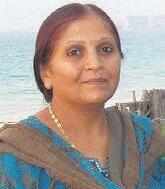
The roots of Shah family in India were sown in a modest village of ‘Mokshi’ where Jaykantbhai’s father lived and grew up, before he took up the next phase of his life in Arusha Tanzania. The founders of Brinda Jaykant Shah Foundation made their choice to do something for the people of Mokshi that will add value to the children of ‘Mokshi’ and ultimately help the families of these children get an edge in competition in the outside world. It was itting for the Founders to choose to build a brand NEW school in the village of Mokshi situated in the Savli Taluka of Gujurat’s Vadodara district. Mokshi is still a small‐time village with a current population of just around 6000. The new school building created by the foundation includes a Community Hall, Smart/Google based classroom, another classroom, a science garden with security entry gate and drinking water area. The villagers are overjoyed to receive this worthy gift that will help hundreds of students year after year. Considering the bene its that will extend to their families, the number of lives bene itted will run to hundreds of thousands in just a few years.
Though donating had always been a way of life for Jaykantbhai. He had been regularly donating to various UK registered charities. This charities include organisations like Bhakivrdanta (ISKON), Anoopam Mission, The Friend of St Thomas Hospital, Woking & Sam Beare Hospice, Mind, The silver Line, Surrey Hindu Cultural Association (SHCA), Lohana Mahajan( UK), Arukah Network, Just Giving, International Association of Human Values, Shri Sanatan, Chithurst Buddhist Monastery, Surrey Community Action and Macmillian..
After Brindaben left for her inal journey, Jaykantbhai promised himself to do something that is even more meaningful and lifelong. He decided to contribute where his hard earned wealth touched the lives of thousands of people, enabling a transformation to their entire life. With the ethos to enable the betterment of society Brinda Jaykant Shah Foundation was legally established. The foundation was an important step forward to make
Jaykantbhai was born in Arusha city of Tanzania while his late better half was born in the town of Moshi near the Tanzania‐Kenya border. The foundation selected a small village called Marurani that is located between Arusha and Moshi. The Shah family shows their gratitude to Tanzania by building new constructions at this school in rural Tanzania. The foundation enabled building of new water tanks for rain water harvesting, installed new classrooms and also created a girls toilet block.
The Shah family only wishes to thank God for giving them the opportunity to help others and seek blessings to let them carry on with the donation philosophy. Jaykanbhai Shah who leads the Shah family and the foundation has proved that he was sent on this small planet by God with an objective to make others' lives better. However, for Jaykantbhai this is just the beginning.
Brinda Jaykant Shah Foundation like to thank https://www.onekindact.org





Diwali is one of India’s biggest festivals and holiday of the year, celebrated by Hindus, Jains, Sikhs, and some Buddhists.The festival gets its name from the row of clay lamps (Deepa) that Indians light outside their homes to symbolize the inner light that protects from spiritual darkness. The festival of Diwali lasts five days, marking the start of the Hindu new year.The exact dates change each year and are determined by the position of the moon – but it usually falls between October and November.
Many schools including my school celebrate Diwali in some way. In my primary school, therewould be an assembly on the festival of Diwali which explained why
Talluru Nitalaksh, 4th Form

Gidea park independent school
Diwali is the Hindu festival of lights where Hindus celebrate Rama and Sita’s homecoming. Now I will tell you all details of Lord Rama. Rama was a skilled warrior as well as a prince of Kosala, his father Dasharatha was the king of Kosala. Once upon a time in the city of Kosala Rama and his wife sita where enjoying the sun while Kaikeyi told Dasharatha to banish Rama to the Forest for Fourteen years, so her son could become king instead of Rama. Rama and sita were banished to the forest for four-teen years and Rama’s loving little brother Lakshmana also followed them. One day with the help of another demon who turned into a golden fawn to distract Rama and Lakshmana. Ravana then kidnapped Sita. Rama, with help of Hanuman and monkey army defeated and killed Ravana with his legendary arrows given to him by gods and was reunited with Sita . They travelled home after their fourteen years were finished and Rama and Sita became king and queen. This day is celebrated by all Hindus as Diwali. Now you heard the story let’s move on to what we do for Diwali. We wake up early in the morning and do a head bath, we wear traditional Indian dresses and we then go to the temple to worship Lord Rama and some other Hindu gods for saving this world from the demons and darkness . We then share and eat lots of sweets on Diwali like Ladus, Rasgula,and Gulabjams. Now for the really fun part of Diwali where we celebrate by lighting up the sky with fireworks and dancing with sparklers to celebrate the demon-free world. Now you know all about Diwali and I hope you celebrate it every year.
and how different faiths celebrate it in different ways and the stories behind it. In secondary, my school celebrates Diwali by holding different events like photography competitionand selling mithai Indian sweets.
At home, we light Deepa around the house and inside the house too. We also make different dishes and sweets to celebrate Deepavali, such as laddu, holigeand many other delicious foods. Sometimes we go to other people’s houses to celebrate with them, or my parents host a meetup for people to come over and celebrate Diwali together.Every so often, it’s a potluck so every family contributes to the feast.Some years we have celebrated by setting off fireworks with lots of friendsand family.
Deepavali symbolises goodnessover evil we all pray to the goddess of prosperity to help us walk from darkness to light. With this, I wish everyone a very happy Deepavali!!


Diwali is the Indian festival of lights celebrating the triumph of good over evil – its origins are said to be in the Ramayana which is one of the two holiest books of Hinduism. In that book, it celebrates the victory of Lord Ram over the demon king Ravana. In West Bengal, India, where my parents come from and where I was born, we also celebrate Kali Puja (worship of the Goddess Kali) at around the same time. During Kali Puja, we worship the Goddess Kali and burst crackers. It is also a tradition to have Bengali-style goat curry during Kali Puja. To celebrate Diwali, people wear new clothes, eat sweets, light candles or lamps and burn crackers. Because we celebrate both Diwali and Kali Puja, as well as Durga Puja which comes a few days before, this time of the year is a monthlong celebration of food, new clothes, light decorations and cultural programmes.
In the UK, we continue to hold onto our traditions and celebrate Diwali and Kali Puja along with the large number of other people from India who have also made the UK their home. Rather than loud crackers, we celebrate mainly with lights. We usually put up our Christmas lights a bit early so that our house is decorated for Diwali. During this time, we also eat lots of Indian sweets and participate in cultural programmes.During this time, we meet with old friends and make new ones, while having a great time doing so.





I feel like the main purpose of Diwali is gratitude: to be grateful for all that has been given to you by God and not to take it for granted. Likewise, Dumbledore said in Harry Potter, ‘Happiness can be turned on in the darkest of times if only one remembers to turn on the light.’
When my family and I were in India, during the festival of Diwali we loved to make colourful patterns of rangoli with stencils- if you would like to put it outside your home for decoration (so it’s perfect) but inside, we did it freehand. Diwali is also special for varieties of food. In Maharashtrian families, we make sweet items like laddoos, karanji and shankapali; savoury items like chakali, chiwada, shev. I used to help my mum and grandmother to make karanji and also used to help my father and grandfather make light-up candles and decorations.
We exchange Diwali food items with neighbours and relatives. I loved to try different varieties.
In London, I attend VYOE (Vallabh Youth Organization Education) on Sundays for the last 6 years. We have a Diwali celebration day where we carry out various activities like painting diyas, making greeting cards of rangoli etc.
Why Diwali is celebrated?
Sita had been abducted by the voracious Ravana and took her to Lanka which is now known as ‘Sri Lanka’. While on his way to meet Sita, Rama met an ambitious, witty monkey called Hanuman who had greatly helped him in the defeat of Ravana and rescue of Sita: he set Lanka on fire,helped locate Sita,supported Rama and Lakshmana with a huge monkey army and carried a whole mountain to save Lakshmana.
After defeating Ravana, Rama came to Ayodhya, his Kingdom, along with Sita on the auspicious day of Diwali.Therefore, we celebrate Diwali, to commemorate good over evil.
Shreyas Jha, P6, 10 years Glasgow


I am so delighted to share my experiences of Diwali celebrations in past many years. It’s my favourite festival. It is full of fun, cleanliness, decorations, flowers, pooja, sweets in bhogprasad, fireworks, a good time with family as well as some naughty time with our family friends. Diwali is an opportunity for me to make new friends, exchange sweets with each other and neighbours, and to donate clothes and food to needy people.
Diwali is a very special occasion for our family also because it’s the Birthday of my little brother! On Diwali morning, we brothers get lots of surprise gifts from our parents so we wake up very happy and excited and celebrate all day. I love staying awake longer on Diwali night, doing some pooja and enjoying fireworks till late on Diwali night.
Before Covid, I used to go to Balagokulam in Glasgow where we used to celebrate Diwali with others. We used to do Diwali arts and crafts, listen to stories of Diwali origin and play informative fun games.


So far, I never got a chance to celebrate Diwali in India with my grandparents and larger family. I wish that there was a long official holiday in the UK during Diwali, like what my cousins get in India. Then we could visit my granddad and celebrate with them. Or at least I could stay at home on Diwali day.
For the last two years during Covid, my family celebrated it alone. But this year I am eager to repeat the memories. May Sri Krishna bless us all this Diwali.
Happy Diwali to everyone!
Generally, in India, I celebrate Diwali with my wider family. We buy the necessary items at local shopsmaking multiple rounds for fireworks and pooja equipment as I am very fond of shopping in India I join.Finally, after a day or two of cleaning and buying we all take baths to clean ourselves and get ready for tomorrow.
The next day we begin with an early morning where my mum gets up early to start cooking food and lots of sweets to give out to friends and relatives and some for ourselves. I then go to my grandparents and learn and hear about Diwali stories and the meaning behind it where Ravana kidnaps Sita and Rama goes to SriLanka and kills Ravana to save sita from Ravana. Satyabhama kills narakasura under the supervision of Krishna. All I understood is Diwali is all about the victory of good over bad.
Then we wear new traditional clothes and I go and play with my cousins and go outside to eat some street food. In the evening, with my cousins and family, I light fireworks, crackers and small bombs in the street with sparklers and film everything on phones. At the end of the day, we then watch TV as a family and exchange gifts before sleeping.
The case is a bit different in the UK. I celebrate with my sweet sister, parents and some dear friends by lighting fireworks in the garden as there are some strict rules not to light them on streets. We eat delicious festive food and end up visiting the nearby temple.Whether it is in India or abroad I believe the festive vibes are same.
At Pramukh kids Montessori we believe no limits for learning and development for children’s minds. Maria Montessori said, “What hand does the mind remembers” and on this concept we also focus by providing a safe, nurturing, and excellent learning environment where children will be kept active with hands and so the mind can develop with curiosity and positive attitude and children become lifelong learners. We also aim to teach children how to handle failure rather than upset.
Pramukh Kids Montessori with over 50 children’s places the Nursery is situated at 5 mins walk from Wembley Central Station. The setting is a spacious modern open plan building with great indoor and outdoor facilities. Excellent public transport links including Wembley Central Station and multiple bus routes stopping around.

• To provide Quality Childcare and Development to children from 6 months to 5 years.

• To create an environment for play and learning which engages children to develop 7 areas of learning with curiosity and positive attitude.
• To support parents always with respect to build outstanding partnership with parents and family.
We said Pramukh Kids Montessori is “Perfect place for Quality Childcare and Development” and we say this with responsibility as we have planned to deliver. From babies to preschool every child being treated as an important and unique individual.
Our Perfect Place means
• Flexible, Nurture, Safe and creative Learning environment to inspire every victorious.
On daily routines we maintain excellent standards of Indoor and Outdoor play areas, regular updated toys and books, Creative activities in iterations, Vegetarian food, Daily High standard hygiene, Safer environment and Skilled and Committed team members.

Our Quality Childcare means
• Committed, Caring and Enthusiastic skilled team to care every child with love.
Our Diverse passionate staff with
boundless enthusiasm, full on commitment to care and teach always ready to handle every moment with passion where your loved one would feel safe, care, love and member of their life.
Our Perfect place for Development means
• Food, Care and Development are like 3 sides of the triangle.
As we know that What the hand does the mind remembers and young mind know no limits to learn. Therefore, we provide them Nurture and safe environment to explore their own interest to achieve and become lifelong learners with curiosity and positive attitude.
• Food with us
We aware about what children eat throughout the day affects their mood, concentration, and their willingness to remain present in daily activity and learning process. We go extra mile to provide nutrition vegetarian food
• To offer a shift to the child which suits best to parents and carers.
• To identify special care required for children and special service required to parents and make it available.
• To offer a safe and unique environment to make children unique and independent of their Montessori learning.
throughout the day. Which will contain milk, fresh fruits, Juices and smoothies, Vegetables, lentils etc.
• Our flexible timingsParents can select any timing out of 3 shifts:
Full Day 8 am to 6 pm
AM Session 8 am to 1 pm
PM Session 1 pm to 6 pm
We are open for 51 weeks of the year (1 week closed on Christmas).
"Perfect place for Quality Childcare and Development for children aged 6 months to 5 years"

Pramukh Kids Montessori is entirely vegetarian compared to all nurseries in the local area.








The festival of lights and wealth, Diwali is coming. Diwali is a festival of prosperity, wealth, progress, knowledge, and many more. The origin of this day has different mythological stories over layers of Indian history. Diwali marks the end and start of a year in the Hindu calendar. It is the festival of hope, of light in the world of darkness. Its delights remind us to celebrate the positivity we have in our souls and win over the darkness of our life. It is a celebration of culture, society, humanity, devotion and honesty. So, I, Bhomik Bhagwani, hope for the blessings of Goddess Laxmi, and Lord Ganesha to all the readers. I, hereby also wish a safe and happy Diwali and a very prosperous New Year.


I love Diwali. It is a season that I look forward to all year, especially because it falls within my half-term holidays. My favourite part of the festival is the fireworks, especially those colourful sparklers. I enjoy spectating my brother lighting up the rockets and love the colourful display that they put on when they go boom in the sky. I enjoy visiting my aunt’s house, especially because of the brilliant mithai that she makes. They are so scrumptious. My family and I also visit the local temple where we pray for God's blessings and guidance in life. I love the spiritual feeling that the temple gives you and feel more connected with God. I miss my Grandparents on Diwali though. They live in India, but we talk over video calls, and they give me their blessings as well. I love the Story of why we celebrate Diwali and the way Hanuman lights all of Lanka on fire with the use of his tail.
Kavya Arora Diwali is my favourite festival. We make rangoli at the entrance of the house and decorate our whole house with garlands and lights. I help my mother in finishing the preparation of the pooja, and after that we do aarti. Then, we meet our closed ones and celebrate with them by bustling crackers and enjoying sweets.

Aarna Liloriya - Nower Hill High School
Aahaan Liloriya - Elmgrove Primary School


This year, Diwali will be very memorable for both of us and my family, as this is our first Diwali in London- the city of Lights. We experienced the joy and festivity of the Indian community in the Diwali celebration at Trafalgar square. It was not only mesmerizing but also motivational for all of us.
On Diwali, people can get together with their family and friends and rejoice in the festival of lights by relishing Indian sweets, gift-giving, feasts, lighting diyas, and bursting crackers. We are eagerly waiting to enjoy all these in London also.
People who stay away from their loved ones return to their homes to celebrate with their families. Diwali is more than simply a festival; it is a delight and a happy occasion that brings together family and friends. On every Diwali, our mom especially chants Shree Ram Stuti- Shree Ram Chandra Kripalu Bhaju Mana… and we love listening to every word of it.
Shubh Deepawali!My day begins with a wake-up call from my mother, you see we’re always late to go to the temple cause there are just so many of us at home. Six to be exact. Everyone one of us will get an oil massage from her and since we’re all boys at home she’s lucky only her hair takes time to soak up all the oil. After that, we shower with Siakai a special concoction made by our mother. Just a few days before Diwali all of us would have gotten new Kurtas, as it’s our tradition to use new clothing on this auspicious day. After a refreshing bath, we get dressed in our new Kurtas and have a little prayer together as a family. Then we touch our parent's feet and they give us money in ang pao packers for some reason, but that’s just part of the festivities. It’s an adapted concept from Chinese culture. (At every open house we go to we will receive an ang pao packet but only for the children and non-working adults.) After that, we head to the temple as a family. We will have our prayers done in the temple as the first agenda of our day. Every year, one house within the family, on my mom's side will host breakfast where all her siblings and their
children will show up. We usually head to my uncle’s house for breakfast and we end up eating so much that sometimes there is no space for lunch. Soft and fluffy idlis, delicious curries and savoury Indian sweets are served for breakfast. After taking pictures with the whole family my mom sided with all the full bellies that the uncles try to hide by sucking in, we head to the next open house for lunch. We usually have lunch at my dad’s eldest sister's house where all his brothers and sisters meet.
After lunch and a good catch-up session with the family, we had back home to rest and prepare ourselves for the evening to come. In the evening we have all dressed again in our new clothing and we head out to our friend's houses to celebrate the festive season. There is nothing like a Diwali party, where everyone looks fresh and beautiful, you can just feel the magic in the air. There’s is food, sweets, good company, sometimes cocktails and good Indian music for us to dance the night away.
Dharma, Kuala Lumpur, Malaysia









¯ђ ¦щ ¸ЦºЪ ¶ÃЦº. κє એ³щ ĬકЦ¿ ¯ºЪકы ઓ½¡Ь ¦Ьєએ ¸ЦºЪ į¸®Ц ¦щએ ®Ьє¦Ьє, ¦¯Цє¦ђ¬Ъ



³°Ъ ¿ક¯ђ... અ¸щ £®Ъ ¾Цº ´╙ºЩç°╙¯³щ ¡ђªЦє ³Ц¸ આ´Ъ³щ § ¾Ъએ ¦Ъએ. આ³щ કЦº®щ § °¯Цє ÂЬ¡ અ³щ ±Ьњ¡³Ъ
-
¸Цªъ ç¾Ц°↓³Ъ ÂЪ¸Цºщ¡Ц
¯ђ એ¾Ьє અ§¾Ц½Ь є. (Âѓ§×¹њ ╙¥Ħ»щ¡Ц)
આ ç°½


¯щ³Ц ´╙º®Ц¸щ
úщ ╙ĝæ³Ц
કºЦ¹ђ §щ³щ
(ÃЦ»³Ц
ક¹Ь↨¦щ. ¢Ъ¯Ц µЦઉ׬ъ¿³щ ЧકÂЬ¸Ь¸Цє ´Цє¥ એકº¸Цє ¯ь¹Цº °¹щ»Ъ આє¡³Ъ ÃђЩç´ª» (આઇ ÃђЩç´ª»)³Ц ╙³¸Ц↓® ¸Цªъ »Ц¹× ઈתº³щ¿³» અ³щ Ĭ╙¯·Ц¿Ц½Ъ અĠщº ઉ˜ђ¢´╙¯ઓ³Ъ ÂЦ°щ Âщ¾ЦકЦ¹↓¸Цє ÃЦ° ╙¸»Цã¹Ц ïЦ. આ³Ц°Ъ ¢ºЪ¶, ╙³:ÂÃЦ¹
¾³¸Цєઅ§¾Ц½Цє´°ºЦ¿щ
˛ЦºЦ ² ÃÂЬ¸¯Ъ ¶Ц»¸ЬકЮі± ´ºЪ¡ ¢Ъ¯Ц એÂђ╙Âએ¿³ (ÃЦ»³Ъ ¢Ъ¯Ц µЦઉ׬ъ¿³) ³Ц¸°Ъ Â¡Ц¾¯Ъ Âєç°Ц ç°´Цઇ ïЪ. ¯щઓ અ¸ЦºЦ ¸Цªъ ÂЦકЦº કº¾Ц³Ь
¸аકЪ ¢¹Ц ¦щ. ·¢¾ú ¢Ъ¯Ц³Ц Ĭ¥Цº
¸Цªъ¯щ¸§ ±ºщક ÃђªъàÂ³Ц λ¸,
અ³щ £ºђ¸Цє ¶Цઈ¶»³Ъ

Ĭ¯

¸½Ъ. એ કЦºЪ¢ºщ ¿щ«³щ કЅє કы , ‘¿щ«, ¯¸щ ¸ЦºЪ ³ђકºЪ³Цє ╙¯¸ ╙±¾Âђ¸Цє´® ¸ЦºЪ ´ЦÂщ¾ь¯ιєકºЦã¹Ьє...│ ¶Ъ ¯ºµ ¿щ«³щ ¯ђ ¡¶º § ³Ãђ¯Ъ કы , 35 ¾Á↓°Ъ ઉÓકжΓ ╙³¸Ц↓®કЦ¹↓ કº¯Цє ¯щ¸³Ц આ કЦºЪ¢ºщ





















ÂєÂЦº³Цє´Ц»³ÃЦºЪ, ±ь¾ ·¢¾Ц³ ╙¾æ®Ь³Ъ ╙³કª ╙³¾Ц કº³ЦºЦє ±щ¾Ъ ¸ÃЦ»Σ¸Ъ





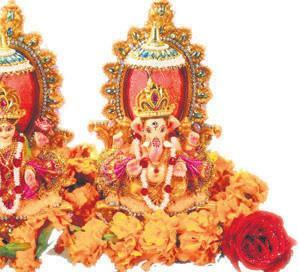







¨£¬Ц અ³щ Ŭщ¿ ¾²щ ¦щ, ´╙º¾Цº ¯аªъ ¦щ . આ¸, »Σ¸Ъ´а§³ ઉ´ºЦє¯ ±Ъ´Ц¾»Ъ³Ц ╙±¾Âщ આє¡¸Цє કЦ§½
¶аºЪ ³§º »Ц¢¯Ъ ³°Ъ. એ ઉ´ºЦє¯ આє¡³Ъ ºђ¿³Ъ ´® ¾²щ ¦щ ±Ъ´Ц¾»Ъ³Ц ╙±¾Âђ¸Цє ºє¢ђ½Ъ³Ьє ´® એક ¸Ãǽ¾ ¦щ. £º³Ц Ĭ¾щ¿˛Цº ´ЦÂщ ºє¢ђ½Ъ ˛ЦºЦ »Σ¸Ъ ³Цє ¥º® ¶³Ц¾¾Ц³Ь є ĬЦ¾²Ц³ ¦щ ¯щ¸Цє »Ц», ¢Ь»Ц¶Ъ, ´Ъ½ђ, »Ъ»ђ
ºє¢ ¾´ºЦ¹ ¦щ. આ ¶²Ц § ºє¢ ÂકЦºЦÓ¸ક ઊ ↓»Ц¾щ
¯щ¸Цє ¾Ц±½Ъ, કЦ½ђ, અ³щ ºЦ¡ђ¬Ъ ºє¢ ¾´ºЦ¯ђ ³°Ъ, કЦº® કы આ ºє¢ђ ³કЦºЦÓ¸ક ઊ ↓ Ĭ±Ц³ કºщ ¦щ . ¶Ъ ¿Ú±ђ¸Цє એ¸ કÃЪ

ºє¢ђ½Ъ એ ¡Ь¿Ъ અ³щ ઉÓ¾³Ь
Ĭ¯Ъક ¦щ .
¯Ãщ¾Цºђ¸Цє આ¯¿¶Ц એª»щ કы µªЦક¬Ц µђ¬¾Ц³Ь є ´® એક ¸ЦÃЦÓܹ ¦щ . આ¸ ¯ђ ·¢¾Ц³ ĴЪºЦ¸³Ц ¿Ь· આ¢¸³ ´º અ¹ђÖ¹Ц¾ЦÂЪઓએ à ºђ ±Ъ¾¬Цє Ĭ¢ªЦ¾Ъ µªЦક¬Ц µђ¬Ъ ´ђ¯Ц³Ъ અĬ¯Ъ¸ ¡Ь¿Ъ ã¹Ū કºЪ ïЪ. ºЦ¸Ц¹®¸Цє ´® ¯щ³Ь є
¦щ. એ ╙±¾Â³Ъ ¹Ц±¸Цє à ºђ ¾Á↓ ¶Ц± આ§щ ´®

કº¾Ц¸Цєઆ¾щ¦щ . ¾ьΦЦЦ╙³ક ºЪ¯щ§ђઈએ ¯ђ µªЦક¬Ц°Ъ ઉÓÂЦà ¾²щ ¦щ . ºє¢Ъ³ આ¯¿¶Ц °Ъ ¸³³Ъ ╙³ºЦ¿Ц ±аº









ç³Ц³ કº¾Ц³ђ ઉà»щ¡ ÂЦє´¬ъ ¦щ આ¾Ь ç³Ц³ Ä¹Цºщક ¢ђ¾Ц»®ђ ˛ЦºЦ ¢ѓ¿Ц½Цઓ¸Цє કºЦ¾¾Ц¸Цє આ¾¯Ь є. અ╙³Γ³Ц ╙³¾Цº® ¸Цªъ‘Âѓ╙º Ãђ│¸Цє¸є¢» ક½¿³Ъ ç°Ц´³Ц કºЪ ¯щ¸Цє ¸ђº³Ъ ´Ỳ¦Ъઓ »¢Ц¬¾Ц¸Цє આ¾¯Ъ, અ³щ ¥ђ¯ºµ º¾³Ц ±Ц®Ц ¾щº¾Ц¸Цє આ¾¯Ц. ¾Ц¸¸Ц¢↓¸Цє ‘£ªકі¥Ьક│ ÂЦ²³Ц³ђ ઉà»щ¡ આ Ĭ¸Ц®щ ¸½щ ¦щ. £¬Ц¸Цє ¾Ц¸¸Ц¢ ╙±╙Τ¯ çĦЪઓ³Ъ કі¥ЬકЪઓ એક«Ъ કº¾Ц¸Цє આ¾¯Ъ. ĬÓ¹щક ÂЦ²ક એ¸Цє°Ъ એક કі¥ЬકЪ Ġî કºЪ³щ એ³щ ´Ãщº³ЦºЪ³Ь º╙¯ÂЦ²³



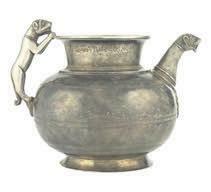

Ĭ¹ђ¢

















આ¾¯ђ.

ºЪ¯щ 39 ¾Á↓ ÂЬ²Ъ
·Цઇએ કі´³Ъ ºકЦº³Ъ Âщ¾Ц કºЪ. 1702¸Цє §×¸щ»Ц

»¾ ·Цઈ 1774¸Цє
°¹Ц Ó¹Цºщ એ¸³Ъ ´Ц¦½ કЮªЭѕ¶³щ ¸Цªъ³Ьє એક
ºÃщ®Цєક³Ь ¸કЦ³ અ³щ 20 à º λ╙´¹Ц³Ъ

ºђક¬ ´Ьє ¸аક¯Ц¢¹Ц ïЦ. »¾ ·Цઈ અ³щ ¯щ¸³Цє કЮªЭѕ¶Ъ§³ђએ



કі´³Ъ ºકЦº ¸Цªъ »¢·¢ 400
¾ђº)¸Цє
°ઇ.
³Ц³Чકі¢³Ъ Âє╙² ˛ЦºЦ Ã℮¢ક℮¢

³¶ЪºЦઓ
અ³щ એ




કº¯Ц
¸Ь







New
y
y
y
em
ti





























































































³щ અ¸щ╙ºકЦ, ¥Ъ³, ´Ц³ અ³щ §¸↓³Ъ³щ ¸કΤ ¶³Ц¾¾Ъ ´¬¿щ. ¬Ъ´Ъ³Ъ º¡Ц¸®Ъ¸Цє આ´®щ અ¸щ╙ºકЦ અ³щ ¥Ъ³³щ ¸Ц¯ આ´Ъ ¿ŪЦ ³°Ъ, ´ºє¯Ь ¡ºЪ±¿╙Ū³Ц ¸Ц¸»Ц¸Цє આ´®щ 2030 ÂЬ²Ъ¸Цє અ¸щ╙ºકЦ અ³щ ¥Ъ³³щ ´Ц¦½ ¦ђ¬Ъ ¿કЪ¿Ьє. ╙¾╙¾² ĬકЦº³Ц ´¹Ц↓¾º®³щ કЦº®щ કж╙Á ÂщĪº આ´®³щ Æ»ђ¶» ¸Цકª¸Цє Ĭ·ЬÓ¾ §¸Ц¾¾Ц³Ъ ¸ÃЦ³ ¯ક ´аºЪ ´Ц¬ъ ¦щ આ´®щ£®Ц ઉÓ´Ц±³ђ³Ц ¸щ×¹Ьµыũ╙º¢ ö ¶³¾Ц³Ъ Τ¸¯Ц ²ºЦ¾Ъએ ¦Ъએ. આ´®щ


ã¹Ц§¶Ъ Чકі¸¯щ ŭђ╙»ªЪ ¢аÐÂ³Ц ÂØ»Ц¹º ¶³Ъ ¿કЪએ ¦Ъએ. ¯Ц§щ¯º³Ц ¾Áђ↓¸Цє કђºђ³Ц ¾щЩij અ³щ અ×¹ µЦ¸Ц↓ ઉÓ´Ц±³ђ³Ц ÂØ»Ц¹щ આ´®Ъ Τ¸¯Цઓ ´аº¾Цº કºЪ ¦щ. ¬Ц¹¸є¬, Żщ»ºЪ, ªъĪЦઇàÂ, Ãщ׬ЪĝЦÙª, ઓªђ Ĭђ¬Ä¿³, એЩק╙³¹╙ºє¢ ¢аÐÂ, ÂђÙª¾щº અ³щ ╙¸³ºàÂ¸Цє આ´®щ આકºЪ ç´²Ц↓¸Цє ´® ¸ђªђ ¶ º ╙ÃçÂђ ક¶§щ કºЪ ¿કЪએ ¦Ъએ. આ´®щ ¶Цє¹ђ ¥¬Ц¾Ъ³щ આ´®Ъ ╙³કЦ ¾²Цº¾Ц³Ъ §λº ¦щ. Âђ»º ´Ц¾º, ¶Ц¹ђ¾щçª













કÃщ¯Ц
‘ઓ¢›³Цઈ¨º│
¢Ь§ºЦ¯¸Цє
¯щ³Ьє±щ¿આ¡Ц¸Цє ¸Ãǽ¾ ¦щ.│ એ Âє´а®↓
¸Ь»ЦકЦ¯ ¯щ ╙±¾Âђ¸Цє ¦´Цઈ અ³щ અÂєÅ¹
Ĭ╙¯·Ц¾ ¸â¹Цє. 1968¸Цє ક℮ĠщÂ¸Цє ╙¾ĩђÃ કºЪ³щ
¨є¨Ц¾Ц¯ ´щ±Ц કº³ЦºЦ ĴЪ¸¯Ъ ╙±ºЦ
¢Цє²Ъ³щ ¸Цє¬ ÂЦ¯щક ╙¸╙³ª ¸Цªъ
અ¸±Ц¾Ц±³Ц Âક ª ÃЦઉÂ¸Цє ¸½¾Ц³Ьє°¹Ьє
Ó¹Цºщ ╙Âє¬Ъકыª- ╙¬કыª³Ц
╙±ºЦ અÃỲ³Ъ ¸Ь»ЦકЦ¯щ
આ¾щ»Цє.એક ´ĦકЦº ´╙ºÁ± ´® °¹щ»Ъ.
¯щ¸Цє અ»Ъ¢ઢ ¹Ь╙³¾╙Â↓ªЪ
´ºє´╙º¯
ºЪ¯щ
કЦ ·є¢
╙»¹Ц?┌
ÂЪ²ђ આΤщ´ ïђ
કЦ¸ ´® ╙±ºЦ એ § ક¹Ь↨! 1975¸Цє કªђકªЪ ±º╙¸¹Ц³³Ц §щ»¾ЦÂ¸Цє¸³щ એ¾Ьє¸³¸Цє °¹ЬєÃ¯Ьєકы °ђ¬Цєક ¾Á↓ ´Ãщ»Цє³Ъ ¸Ь»ЦકЦ¯³Ьєç¸º® કºЦ¾¾Ц ¸Цªъ ¹ ¶Ъ ¾Цº³Ъ ¸Ь»ЦકЦ¯ °Ц¹ ¯ђ કы¾ЬєÂЦιє? ´ºє¯Ьએ¾Ьє¯ђ Ä¹Цє°Ъ ¶³щ? ¸Ь»ЦકЦ¯ »щ³Цº §щ»¸Цє³щ આ´³Цº ºЦ§¸Ãщ»¸Цє!


´ĦકЦºÓ¾¸Цє ¸Ь»ЦકЦ¯ ´ђ¯щ § એક અç°Ц¹Ъ અ³щ આકЩç¸ક £ª³Ц ¶³Ъ ºÃщ ¦щ. ¶Ъ ¾Цº ¸ђકђ ¸½щ કы ³Ц ´® ¸½щ! ºЦ§કЦº®°Ъ ÂЦ-¾ ¶Ъ ¦щ¬Ц³Ъ, ╙¾ΐ╙¾Å¹Ц¯ Чµà¸કЦº ÂÓ¹╙§¯ ºЦ¹³Ъ ¸Ь»ЦકЦ¯, એ¾Ъ § ¦щà»Ъ¾щ»ЪºÃщ»Ъ! 1980³ђ µыĮЬઆºЪ¸╙óђ. કђ»કЦ¯Ц §¾Ц³Ьє ╙³╙¸Ǽ ¯ђ અ¸-¹ЦĦЦ ¾ŵщ³ђ ¸ЬકЦ¸ Ã¯Ьє.કђ»ક¯Ц ÂЬ²Ъ ºщ»¾щ¸Ц¢›અ³щ Ó¹Цє°Ъ ╙¾¸Ц³ ºç¯щ ¢Ь¾ЦÃЦªЪ ´Ã℮¥¾Ц³Ьє Ã¯Ь є. કђ»ક¯Ц¸Цє ÂЦ╙ÃЩÓ¹ક 羧³ђ³ђ ¸щ½ђ ܹђ. ╙¿¾કЮ¸Цº §ђ¿Ъ³Ц અÖ¹Τç°Ц³щ એક ¢ђ╙Η ¹ђ ઈ. º¸╙®ક

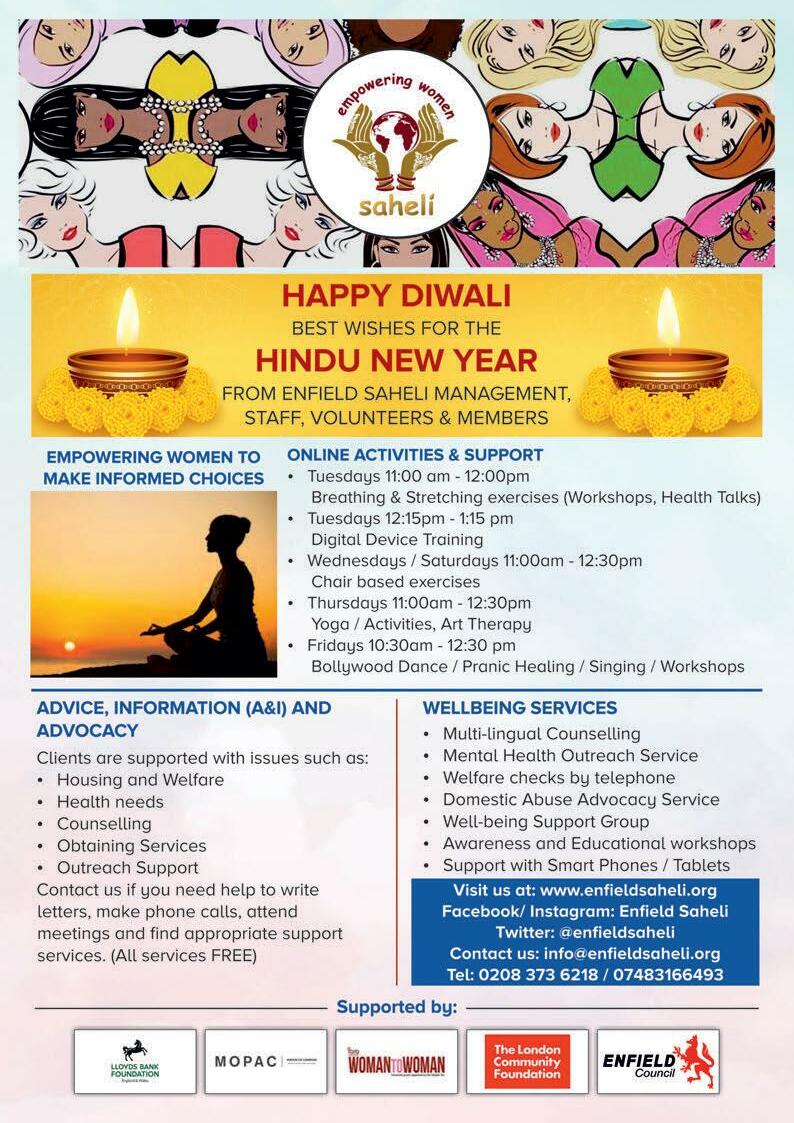













enquiry@bhaktishyamacarecentre.co.uk



Old age is the last stage of human life before the end. After enjoying the spring of youth, old age feels like the autumn season in which ripe yellow leaves fall from the tree one after the another. By the age of 60 or more, many health-related concerns are often faced like blood-sugar, cholesterol, blood pressure, arthritis, heart disease-bypass surgery, memory loss i.e. Alzheimer's etc. At several occasions elderly people often seem to be gloomy and suffering from depression mainly because of loneliness. The fear of grief and dying in old age haunts many people. In order to control the mind at this stage of life, it is necessary for them to adopt a positive attitude. In this present and fast-paced life, young children and other members of the family are tied up with their jobs or other activities and they can
they need to go on holidays to revive themselves and enjoy leisure time, their main concern is always about their elders and in such circumstances they have to turn towards care homes so that proper care is taken of them.



A Residential/Nursing home in Balham, South London, the Bhakti Shyama Care Centre opened in December 2011, largely caring for Asian seniors in mind. An experienced and passionate team fully acquainted with the demands of a care home, looks after residents suffering from Dementia, offers them palliative care, respite care, long term care, reablement care, and end of life care.
Emphasising the term ‘Asian Care Home', Manager Anita said, "I stress on the term, Not only are our seniors pure vegetarians by choice of religion





language barrier which triggers the major part of their problems. How will a person communicate in a dialect foreign to them? Our Asian residents then keep themselves, making treatment ineffective." Elaborating on the services provided by Bhakti Shyama Centre, Manager Anita said they make sure the right kind of care with dignity is being offered, with service with quality to all.
Care homes like Bhakti Shyama are functional examples of why such centres are not always bad places for your loved ones. With home-like hospitality and an eagerness to serve the elderly, this Asian care home serves up the best of treatment and management. It is like Home Away from Home. Bhakti Shyama Care Centre has been rated good by CQC.






અ╙ÃєÂЦ, ÂÓ¹, અç¯щ¹ (¥ђºЪ ³Ц
કº¾Ъ), ĮΜ¥¹↓ અ³щ અ´╙ºĠÃ³Ц ´Ц¹Ц ´º આ§³Ц Â¸Ц§³Ьє §↓³ કº¾Ц³Ъ ³щ¸ ¦щ



╙ÂÖ²Цє¯ђ અ³щ
Ĭ·Ц¾³Ъ ®
°Ц¹ એ § Ãщ¯Ь°Ъ અ¸щ
¹Ь╙³¾╙Â↓ªЪ ╙Â窸³Ъ ÂєÅ¹Ц¶є² ¿Ц¡Цઓ, »ђ¹ђ»Ц ¸щºЪ¸Цઉת ¹Ь╙³¾╙Â↓ªЪ, ઇ¸ђ¹↓¹Ь╙³¾╙Â↓ªЪ, λ¯¢ЪÂ↓¹Ь╙³¾╙Â↓ªЪ, ¹Ь╙³¾╙Â↓ªЪ ઓµ ´ЪÓ¶¢↓, ¬ъ³¾º¸Цє ¹Ь╙³¾╙Â↓ªЪ ઓµ કђ»ђºЦ¬ђ, ² ¹Ь╙³¾╙Â↓ªЪ ઓµ ╙¿કЦ¢ђ, ¹Ь╙³¾╙Â↓ªЪ ઓµ ઇ»Ъ³ђઇ અ³щ ² ¹Ь╙³¾╙Â↓ªЪ ઓµ ╙¾çકђ³ÂЪ³ ¸щ¬ЪÂђ³ Âєç°Ц³ђ¸Цє §ь³ ²¸↓³Ц ╙¿Τ® ¸Цªъ³Ъ ¹ђ§³Ц £¬Цઇ ¦щ આ કђઇ §ь³ ¸є╙±º¸Цє અ´Ц¯Ь є ╙¿Τ® ³°Ъ એ ¢щ ç´Γ¯Ц કº¯Ц §ь³ ´є°Ъઓએ §®Цã¹Ьє કы, ºђ є ±Ц ¾³¸Цє §щ³ђ અ¸» કºЪ ¿કЦ¹; ´¦Ъ એ આÃЦº Ãђ¹ કы ક´¬Цє, ¶Ъ¨³щ કы ઇתº³щ¿³» Âє¶є²ђ...¯¸щ §щ ╙¾Á¹ કÃђ એ ¢щ³Ьє ╙¿Τ®. §ь³ђએ ઇ╙¯ÃЦÂ¸Цє Ä¹Цºщ¹ ╙ÃєÂЦ આ±ºЪ ³°Ъ, કђઇ³Ц ÃŨ³Ьє ´¬Ц¾Ъ »Ъ²Ь ³°Ъ કы કђઇ³Ъ ╙Â¸Ц¸Цє ´¢ ³°Ъ ¸аĹђ, કђઇ³щ ÃЦ╙³ ´Ã℮¥Ц¬Ъ ³°Ъ. ²Цºђ કы ¯¸щ ╙¶¨³щÂ¸Цє Ãђ ¯ђ ¯¸ЦºЦ ક¸↓¥ЦºЪઓ³Ьє કђઇ´® ĬકЦºщ ¿ђÁ® ³ કº¾Ь є , ¹ђÆ¹ ´¢Цº³Ъ ¥аક¾®Ъ, ĬЦ¸Ц╙®ક¯Ц..


╙¾Á¹ક Ġ¯¯Ц કы½¾¾Ц³Ь અ╙·¹Ц³ આ±¹Ь ¦щ §щ¸³Ъ ´ђ¯Ц³Ъ એ× ³Ъ¹ºỲ¢ ક×çªỲ¢ કі´³Ъ ¦щ §щ³Ц ¯щઓ Ĭщ╙¬ъת ¦щ . એ¸®щ ·Цº¯¸Цє ઇתº³щ¿³» çકЮ» µђº §ь³ çª¬Ъ¨³Ъ ç°Ц´³Ц કºЪ Ë¹Цє




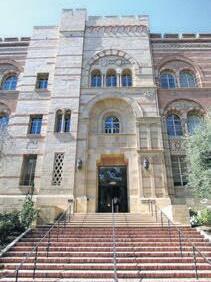


















is the longest-established Gujarati Restaurant in







is run by a Gujarati family, who endeavour to
Gujarati cooking; a concept which has been followed by Rani since 1984.
at Rani is perfect for meeting friends and


enjoying long conversations over a good meal in
–Friday : 11am – 3pm





6pm – 11pm
Rani Restaurant
Online: http://www.rani.uk.com/
Online: https://ranirestaurantonline.co.uk/order-now
Table Online: http://www.rani.uk.com/booktable.html
Us: 0208 349 4386/2636, 0208 349 4386/2636














































є¦Ьє... ´®...┌
´¦Ъ ¾ŵщ´...® કы¸ આã¹ђ?┌






એ³Ц અЩç¯Ó¾ ¢щ¿єકЦ ¢щ¡ºЪ...┌ ─ક¹Цºщ? ¶²Ьєઆ´®Ьє²Ц¹Ь↨³ °Ц¹ Ó¹Цºщ?┌
¸ѓ³ ºÃЪ. °ђ¬Ъ ´½ ¹Ь¾ક ÂЦ¸щ§ђઇ ºÃЪ. ─§¾Ц ±ђ...



કы¾Ьє±Ь:¡¾Ц³Ь? ¸º¯Цє´Ãщ»Цє¹щ

´Ъ¬Ц Âó કº¾Ц³Ъ... ¸º¾Ц³Ъ


¯¸щએ ¥ђ´¬Ъ ╙¾¿щÂЦє·â¹Ьє¦щ?┌
¸Ц°Ьє²а®Цã¹Ьє.
¡Ц»Ъ ÂЦє·â¹Ь
¦щ... ¾Цє¥Ъ ³°Ъ... ³ÃỲ¯º ¾²ЦºщÂЦºђ, º½ અ³щ.. ¡Ц¯ºЪ¶є² ઉ´Ц¹ Âа¨¹ђ Ãђ¯... ´® એ અÃỲ ³°Ъ ¸½¯Ъ... આ¾Ьє¶²Ьє»¡¾Ц³Ьє╙¾±щ¿Ъ »щ¡કђ³щ§ Âа¨щ... §ђકы§¾Ц ±ђ... þщએ ¶²Ц ¸Цªъઆ¸ ´® ¶κє¸ђ¬Эѕ°ઇ ¢¹Ьє¦щ. þщ¯ђ ¥Ц»ђ... ¹ЦÃђ¸ કºЪ³щ´¬ђ...┌ ¹Ь¾¯Ъએ ક¿ђ §¾Ц¶ ³ આعђ. ¥а´¥Ц´ ¹Ь¾ક ÂЦ¸щ§ђઇ ºÃЪ. ¹Ь¾ક³Ъ ³§º ÂЦ¸щ±щ¡Ц¯Ц Âа¹↓¯ºµ ¸є¬Цઇ ïЪ. ¹Ь¾¯Ъ ¯ºµ §ђ¯Ц ¯щ®щ ²Ъ¸щ°Ъ ´а¦¹Ь є, ─´Цє¥щક ╙¸╙³ª ¶щÂ¾Ь ¦щ?
¦щ?┌
Âаº§ ¸ÃЦºЦ§ ¯Ö¹Ц↓³ °Ц¹



અЩç¸¯Ц¸Цє એ¾Ь є ─કЦєઈક┌ ¦щ §щ ¸³щ ¯щ³Ц ¯ºµ ¡′¥Ъ § ¹ ¦щ.┌ ─§¹±Ъ´, ¯Ьє ´º®щ»ђ ± Ãç° ¦щ...












¿કЦ¹ ¦щ . Ø»Ъ¨ ¸ђ¸, ¸Цºђ §ђ¶³ђ ¸¹ °ઈ ¢¹ђ ¦щ ઓકы , ¶Ц¹.┌ ºЦ¾Ъ³щ µђ³¸Цє ¶Ц¹ ¶ђ»¯Цє ´® ¢½щ

¬б¸ђ ·ºЦ¯ђ ïђ. ઓ...Ãђ આ ¶²Ьє ¿Ь °ઈ
ºЅє ¦щ આ§³Ц §³ºщ¿³³щ! Âó¿╙Ū
આ¾¿щએª»щઊ¬Ъ §¿щ.┌
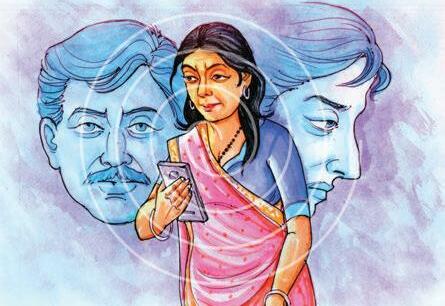
ºЦ¾Ъ ¶ЦºЪ³Ъ ¶ÃЦº આકЦ¿¸Цє ઊ¬¯Ц ´є¡Ъઓ³щ§ђઈ ºÃЪ.
є.
κє´® આ ¿Ьє╙¾¥ЦºЪ ºÃЪ ¦Ьє.┌
´ђ¯Ц³Ъ ¯ ઉ´º § ÃÂ¾Ь આ¾Ъ
27¸Ъ ¸щºщ§ એ╙³¾Â↓ºЪ
અ³щ »щª ¢ђ ³Ц¸³ђ ¿Ú± § ®щ ¯щ¸³Ц ¾³¸ЦєºΝђ § ³°Ъ. ´ºє¯ЬÄ¹Цєક આ╙¯³Ъ ¾Ц¯ ´® ÂЦ¥Ъ § Ã¯Ъ ³щ! ¶щ ╙¾╙·×³ ╙¾¥Цº¾Ц½Ъ ã¹╙Ūએ ¸ЦºЪ¸¥¬Ъ³щ ¾³·º ÂЦ°щ ¿Ц ¸Цªъ ºÃщ¾Ьє §ђઈએ? એ એક ±щ¡Ц¬ђ § ¦щ³щ! ─ઉþ..., આ ¹є¢çªº³Ъ

§¿щ
¯ђ ¸ЦºЦ
³§º કºЪ. ±¿
¯ђ ¿¿Цєક
એક²ЦºЦ અ¾Ц§щ¯щ®щઊ·Ц °ઈ³щ
¾ь·¾Ъ Ù»щª³ђ ±º¾Ц§ђ
¿¿Цєક³щ ·Ц¾¯Ъ ºÂђઈ ´® ¶³Ъ ¢ઈ ïЪ. કઢЪ-·Ц¯, કђºЪ ±Ц½, ઊє╙²¹Ь є , ´аºЪ અ³щºÂ. ¶Â þщ¯ђ... ºЦ¾Ъ અºЪÂЦ ÂЦ¸щઊ·Ъ ºÃЪ ¢ઈ. આ§щ »Æ³³Ъ 27¸Ъ એ╙³¾Â↓ºЪએ ¯щ ´Ãщ»Цє કº¯Цє કіઈક ¾²ЬÂЬ±º »Ц¢Ъ ºÃЪ Ã¯Ъ. ─ºЦ¾Ъ, ¯Цºщ¾Ц½ Ãє¸щ¿Ц ¡Ьà»Цє§ ºЦ¡¾Ц એ°Ъ ¯Ьє¾²ЦºщÂЬ±º ±щ¡Ц¹ ¦щ.┌ ─¿¿Цєક, ¯¸³щ¸ЦºЦ¸Цє¶Ъ§Ьє¿Ь є ¿Ь є ÂЬ є ±º ±щ¡Ц¹ ¦щ?!┌ અ³щ ¿¿Цєક ઉǼº ¾Ц½¾Ц³щ ¶±»щ ¸ђ¶Цઈ» ઉ´º ╙¶¨Ъ °ઈ ¢¹ђ ïђ. ºЦ¾Ъએ કЦ³¸Цє »Цє¶Ц »ªક®Ъ¹Ц ´Ãщ¹Ц↨ અ³щ ļђ ¢ λ¸¸Цє આ¾Ъ એ.ÂЪ. ઓ³ કºЪ
ĬÓ¹щ³Ц















































































ªЪકЦ ¾²Цºщ

Ãђ¹ ¦щ. એ¸³Ъ એ ªЪકЦ°Ъ κє ¾²Цºщ ÂЦιє


કº¾Ц ¯Ó´º ¶³Ъ¿. આ°Ъ § ¡ђªЪ ¡Ь¿Ц¸¯ કº³ЦºЦ ´щ»Ц »ђકђ કº¯Цє ╙˛§щ×ĩ³Ц°³щ ¾²Цºщ ¸Ц³ є.┌ અ³щ ╙¸Ħએ ªЦ¢ђº³Ъ







º╙§çªº ³°Ъ °¯Ъ. £®Ъ ¾Цº
Âє´а®↓ ç ╙¯ § ·аєÂЦઈ ¹. અ«¾Ц╙¬¹Ц
´Ãщ»Цє ¯¸щ ¶Ãщ³´®Ъ³Ц ±ЪકºЪ³Цє »Æ³¸Цє
¦щ,
³
ઊє£¸Цє°Ъ
³ ઓ½¡Ъ ¿કы.



¯ЦºЪ¡
╙³¿Ц³Ъњ ¾Цº
અ³щ
¥Ъ§ђ ¾ŵщ³Ь ¯º ´Цº¡¾Ц¸Цє ¯ક»Ъµ ´¬ъ. ļЦઇ╙¾є¢
ÂЦ¸щ³Ъ ¥Ъ§ અ³щ કЦº ¾ŵщ³Ьє
³ÃỲ. 6. ¶ђ»¾Ц¸Цє કы »¡¾Ц¸Цє ¯ક»Ъµњ ¾Ц¯ કº¯Цє-કº¯Цє ·а»Ъ ¹ કы ´ђ¯щ કઈ ¾Ц¯ કº¯Ц ïЦ. ¶ђ»¯Ъ ¾¡¯щ ·½¯Ц § ¿Ú±ђ ¶ђ»щ, §щ¸ કы ÃЦ°λ¸Ц»³щ ªЭ¾Ц» અ³щ ઓઢ®Ъ³щ ¥Ц±º કÃщ. આ´ЦÂ³Ъ ¥Ъ§ђ³щ ·½¯Ц § ³Ц¸щ ઓ½¡щ. ¶ђ»¯Ъ ¾¡¯щ ´Ãщ»ђ અΤº ¡а¶ »є¶Ц¹. ˇÓ¾³Ъ ╙³¿Ц³Ъњ ¾Ц¯ કº¯Ъ ¾¡¯щ ¹ђÆ¹ ¿Ú± ³ §¬ъ. 7. ¡ђ¾Ц¹щ»Ъ ¥Ъ§ђ ¹Ц± ³ આ¾щ њ ±ºщક ¥Ъ§³Ъ ¹ђÆ¹ §Æ¹Ц Ãђ¹ એ ·Ь»Цઈ ¹. §щ¸ કы ¯Чક¹ђ ¶Ц°λ¸¸Цє ¸аકЪ આ¾щ કы ´¦Ъ ¬Цઇ╙³є¢ ªъ¶» ´º ´¢»Ь¦╙®¹Ьє. ¾Цºє¾Цº ¥Ъ§ђ આ¬Ъઅ¾½Ъ ¸аકЪ

There is a story behind every smile and everyone wants to have a smile that they feel good about, no matter what age, gender, profession, or circumstances. Understanding that simple fact has allowed them to provide not only exceptional results but a pleasing experience as well. So whatever their story maybe they would like to be a part of their lovely smile!
Dr. Nirali Patel is in dental practice for more than a decade. Dr Nirali was awarded dentist of the year in 2013
on the national level (FAMDENT).
International Dental Clinic has been awarded “Highly Commended Corporate Dental Chain of the year” By FEDA in 2021.

The clinic’s core principle is ethical practice with quality treatment and personalized patient care. Their mission is to treat their patients as they would treat their own families. They are dedicated to providing the finest quality service available in a world- class environment and are committed to patient satisfaction
through careful attention. Hygiene is an essential factor for them and hence all the materials used in the clinic are ultra-hygienic and strictly sterilized before use.
They have a state-of-the-art dental clinic in the Centre of the city of Vadodara. They believe in quality treatment at an affordable cost. They provide all dental treatment under one roof - full mouth x-ray, kids dentistry, implant dentistry, full mouth rehabilitation, braces treatment etc.

Hi-tech dentistry – 3D scan, flapless (no cut, no bleeding, no suturing) full mouth implants, invisible braces, zirconia crowns from 3M
Their team – They have specialist doctors from all over India, who have taken specialist training from all over the globe.
Support – They always provide after and during treatment support and always available for patients through telephonic communication. Material – all materials used in their set-up are imported from Germany, UK, USA etc.
Sterilization – They follow strict and stringent sterilization protocols. Time management – They understand that it may be difficult to make time for dentistry in their busy schedule. Thus they have developed a specialized process designed to help them perform maximum work in minimum time, with as few appointments as possible.
An eye for aesthetics – From a simple crown to a complete smile makeover, they ensure that their new teeth look natural and stunning. They ensure that the
principles of design and aesthetics are incorporated in every aspect of their work.
Their speciality – dental implantsDr Nirali has taken Dental Implantology training from various institutes in different countries. She has placed more than 10,000+ implants. She uses all the latest technology for the same and assures painless implant procedure. They have an in-house full mouth scan and the latest patient education and implant planning software for the same.
For more information contact:
International Dental Clinic, Race Course, Vadodara Branches: Vadodara - Bhadran - Borsad - Dharmaj Contact: +91 99744 53643, +91 98980 67693 info@idccare.com | www.idccare.com
DR. NIRALI PATEL(BDS & Implantologist)DR. SHAIL PATEL(Managing Director - IDC)³°Ъ ´® ¯щ³Ц°Ъ ¸¹³Ъ ¶¥¯
કºЪ ¿કЦ¹ ¦щ! ³ ¸ ¹Ь? ¯ђ ¾Цє¥ђ આ¢½... અ¸щ╙ºકЦ, કы³щ¬Ц અ³щ ³щ²º»щ×ÐÂ¸Цє »ђકђ ´º કºЦ¹щ»Ц ╙ºÂ¥↓³Ц ¯Цº® અ³ЬÂЦº, §щ»ђકђ ´ьÂЦ ¡¥ ³щ¸¹³Ъ ¶¥¯ કºщ¦щ¯щઓ ¾³¸Цє




¦щ¯щ¿Цક·Ц
є ¿ЦºЪ╙ºક અ³щ ¸Ц³╙Âક આºђÆ¹ ¶Ъ ³Ъ ¯Ь»³Ц¸Цє ¾²Ь ¡ºЦ¶ Ãђ¹ ¦щ ºђ¥ક ¾Ц¯ ¦щ કы §ђ ·а»ђ³щ ¸Цµ કº¾Ц³Ъ ªъ¾ ´Ц¬Ъ »ઇએ ¯ђ çĺъ³щ કЦº®щ ¸Ц³╙Âક ¶Ъ¸ЦºЪ³Ъ આ¿єકЦ »¢·¢ ¿а×¹ Ãђ¹ ¦щ. ╙ºÂ¥↓³Ц »щ¡ક »ђºщ³ ªЦઉÂщת³Ц ¸¯щ, ¸Цµ કº¾Ц³Ъ ªъ¾ ³Ц Ãђ¹ ¯ђ કђઇ³щકђઇ λ´щ╙±¸Ц¢
¸є¢Ц¾Ъ
Healing Tree is more than a hospital. It is how, we believe, medicine should be practiced - ethically, humanely, holistically. One of the best-equipped, comprehensive healthcare facilities in Gujarat with luxurious Gold and Silver Rooms and Platinum Suites overlooking a green 100-acre campus, The Healing Tree offers accredited diagnostics and treatment, from routine to the most complex cases, by a team of some of the finest medical minds in the state. With a gamut of preventive programmes, home care, assisted living and more, The Healing Tree redefines the way medicine is practiced today.




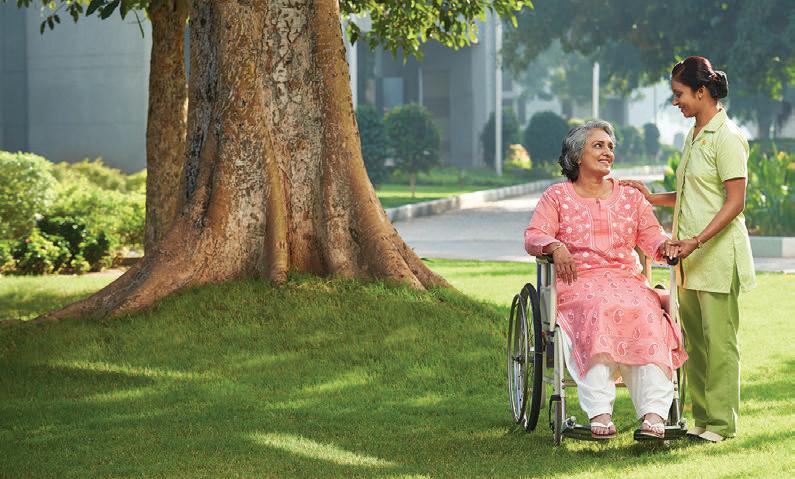




































એ ¢¢³Ъ ÂЦ¾કЪ Âа¯Ц ¦щ ´® Âаº§³Ъ આº¯Ъ¸Цє º╙¯·º કº ³°Ъ ºÃщ¯ЪઆકЦ¿ ³щ²ºЦ ¾ŵщ ±ђ³ ĪЬ¾³ђ








Parth
is in
demand as he nar-
explains the importance of
in a very proper way to the youngsters who do not understand the purpose behind the funeral. In the same way, youngster who are unable to

or
rituals performed on
occasion or marriage ceremony, young Shastri Parth Mehta is master in conducting marriage ceremony in English. His demand as a priest for


weddings rituals which are held abroad is very high.

કº¾Ц¸Цє µ½ ºÃщ¿щ. §¸Ъ³-¸કЦ³³Ц ã¹¾ÂЦ¹¸Цє ¥ઢЦ¾-ઉ¯Цº §ђ¾Ц ¸½щ. §ђકы, ³ЬકÂЦ³Ъ³ђ ·¹

°Ц¹.
³ђક╙º¹Ц¯ ¾¢↓³щ
³¾Ъ
¶ઢ¯Ъ ¸½щ.




ÂЦ°ÂÃકЦº ±ºщક કЦ¹ђ↓¸Цє ¸щ½¾Ъ ¿ક¿ђ. આ´³ђ Âщ¾Ц·Ц¾Ъ ç¾·Ц¾ આ´³Ц કЦ¹ђ↓¸Цє ¸±±λ´°¿щ.



³Ъµ½¯Ц ³¾Ъ ઊє¥Цઇએઆє¶¿щ
¾Á↓³Ц ¸Ö¹ ·Ц¢¸Цє ╙³º°↓ક ╙¥є¯Ц

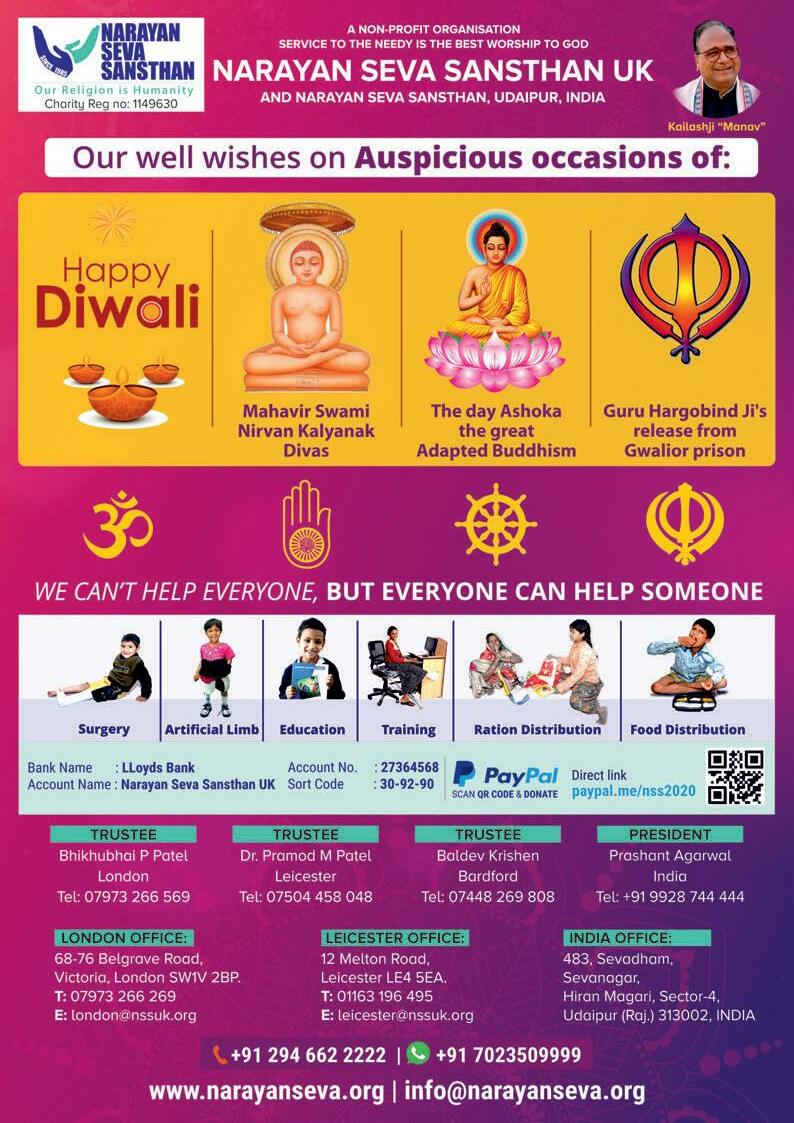

We also buy
Birmingham
Warstone Lane
Quarter Birmingham - B18
Address
and jewellery. For the best price, please contact us


Beauchamp Place
London - SW3 1NQ
Contact Birmingham: 0121 236 4415 London: 020 7405 1477 www.marlows-diamonds.co.uk


















































 VIVEK SARAOGI
VIVEK SARAOGI







¦щ !│ ÂЦ¾ ¦ªકы»Ъ ક¸Ц³¾Ц½Ц ·Цઈ³щ ‘³Ьક¿Ц³Ъ આઇªъ¸│ કÃщ¾Ц¹. ³¸а³щ±Цº (¶×³щ ºЪ¯щ) ¸Ц®Â ¸Цªъ કÃщ¾Ц¹ ‘આઇªъ¸ ¦щ , Ã℮ ¶ђÂ!│ અ¸Ьક ╙¾╙¥Ħ આઇªъ¸³щ ‘»¢¬Ъ│ આઇªъ¸ ´® કÃщ¾Ц¹.




¾щ´ЦºЪ ·ЦÁЦ³Ц આ ¿Ú±ђ ¸Ц®Âђ ´º કыª»Ц º ºЪ¯щ µЪª °Ц¹ ¦щ? ‘³є¢ ¦щ Ãђ!│, ‘§®Â ¦щ, §ºЦ

આã¹Ц ¯щ°Ъ ¸³щ §ºЦ...┌
─અà¹Ц, ¸′¿ЬકЅє? અ╙¯╙° ±щ¾ђ ·¾њ, ‘અ╙¯╙°│ ¿Ú±³ђ અ°↓ § ‘§щ³щ આ¾¾Ц³Ъ































¦щ. ¯ђ આ´®щ ¿Ъ
·ºЪએ ¦Ъએ ³щ ºકЦº³щ ´ђÁЪએ

»Ц¢Ъ.
Ьє, ─╙³¸Ц, ¯ЬєકЦº¸Цє ¹ ¦щ? κє´® ¯ЦºЦ ¶Ц´Ь ³щ ¸½Ъ »ઇ¿...┌ ╙³¸Цએ કЅє, ─¸Цµ કº§ђ. »ђક¬Цઉ³³Ц ╙³¹¸ Ĭ¸Ц®щ, ¸ЦºЦ ¶Ц´Ь ³щ ¸ЦºЦ ╙Â¾Ц¹ ¶Ъ§Ь є કђઇ ¸½Ъ ¿ક¯Ь є ³°Ъ. º╙¾ ´® ¸½Ъ ¿ક¯Ц ³°Ъ. ¸ЦºЦ ¶Ц´Ь એક»Ц ¦щઅ³щએ¸³щ¬Ц¹Ц╙¶╙ªÂ ³щÃЦª↔³Ъ ¯ક»Ъµ ¦щ એª»щ »ђક¬Цઉ³³Ц ╙³¹¸ અ³ЬÂЦº κє ¶Ц´Ь ³щ ¯щ¸³Ьє
,
અ³щ§λºЪ ¾ç¯Ь´Ã℮¥Ц¬¾Ц અ³щ¯щ¸³Ъ કЦ½ ºЦ¡¾Ц


╙§є±¢Ъ આ¸ ÂЦє·â¹Ц
ક¹Ь↨ ¦щ³щ ·Цઈ, અ³щ ¯¸щ ¸³щ
¦ђ ÂЦє·½ђ ¦ђ! કЦ³ ˜ђ કы ³ ˜ђ, ÂЦє·½Ъ¹щ § ¦Ъએ. અ³щ



કЦ³щ°Ъ ÂЦє·½Ъ ¶Ъ§щ કЦ³щ°Ъ કЦઢЪ ³Цє¡¯Ц¹ આ¾¬Ъ ¢¹Ьє ¦щ
Ë¹Цºщ ĦЪ ´а¯½Ъ³Ц ¶щઉ કЦ³°Ъ ¢¹щ»Ьє ´Ц®Ъ ´щª¸Цє § ºÃщ¯Ьє Ã¯Ь є. એª»щ ¯щ ¾ђ↓Ǽ¸! ¸˹Ц
§щ¾Ьє ક¹Ь ↨. ¦¢³·Цઈ §щ¾Ьє એª»щ? આ આ´¬Ц ¦¢³·Цઈ. એ¸³щ એક ¾Цº ¸′ ¸ЦºЦ ´щª¸Цє §ºЦ
ºÃщ ¦щ એ¸ કЅє, ¯ђ ¯щ¸®щ કЅє, એ³Ь ¯ђ «Ъક ´® ¸Цιє અÓ¹Цºщ¸Ц°Ь є´ક¬Ц¹ ¦щ, ¶ЦકЦ આ¾щ
§Ь±Ъ ¶¯Ц¾Ъ. એક³Ъ ¯ђ કы´Цє¥ »Ц¡. ¶Ъ ³Ъ ¯ђ કы¶щ»Ц¡, અ³щĦЪ ¯ђ ¸ЦĦ Âђ³Ц³Ц ¾§³ §щª»Ъ §. ºЦ ·ђ§³ђ
¦¢³·Цઈ³Ъ



ĬકЦº³Ц



³щ! ¯щ ij¯³щ κє Âє¶є²ÂЦ°щ º¡Ц¾Ьє¦Ьє. ij¯ અ³щ Âє¶є²³щ¯ђ¬¾Ц ¸Цªъ ¯ђ¬µђ¬³Ц ÂЦ²³ђ³Ъ §λº ´¬¯Ъ ³°Ъ. µŪ ¸℮¸Цє કіઈકઆ¬Эѕઅ¾½Ьє¸аકЪ±ђ ¯ђ ij¯ ¯аªЪ ¹ અ³щ¸℮એ°Ъ કіઈકઆ¬Эѕઅ¾½Ьє¶ђ»Ъ ±ђ ¯ђ Âє¶є² ¯аªЪ ¹! એª»щ § ij¯ અ³щ Âє¶є²³щ¶κ ‘¾½¢¾Ьє│³ÃỲ!!!







Albury Associates Ltd 33
Amba Forwarding (London) Ltd 90
Anand International Ltd 93
Anoopam Mission 89
Axiom DWFM 19
Baps Swaminarayan Sanstha 11
Bhanderi Lab Grown Diamonds 2
Brahma Kumaris World Spiritual University103
Bright Little Stars Nursery 69
Brinda Jaykant Shah Foundation 67
Cardiff Sanatan Hindu Mandir 114
Caspian Travel 117
Chan Neill Solicitors 51
Chandu Tailor & Son Ltd 133
Charotar University of Science & Technology 87
Charusat Healthcare & Research Foundation137
Chown Dewhurst LLP 117
Citibond Travel London Ltd 95
Contact 4 Support Services. 167
Westcombe Group 180
Croydon Motor Spares Ltd 134
Dhamecha Cash & Carry 7
Dharmaj Society Of London 173
Dosa Centre Ltd 129
Dr Nik Kotecha OBE DL 45
Dr. Keyur Buch 143
Dr. Zarna Purohit Taluja 145
Dream House Construction 170
Elmpride Ltd 173
Enfield Saheli 105

Eran Diamond Uk Ltd 155
Euroken Supplies Ltd 109
Gajali Life Sciences LLP 41 Genisys Group 79
Gita Foundation UK 31
Gita Foundation UK 77
Gokul Vrandavan Care Home 84
Gold Investments Ltd 121
Golden Meadows / G M Impex Ltd57
Gujarat Hindu Society 97 H & C Aircon Ltd 157
Harrow Business Centre 29
Heavenly Desserts (Kingsbury) 106 Hindu Council Brent 118 ICICI Bank 21
International Dental Clinic 139
Interpolitan Money 178 Jade Pharmacy 147
Jay Vadher & Co Solicitors 75
Jayashankar Limted 149 John Cumming Ross Ltd 59
K P Engineering Works Ltd 90
Kadwa Patidar Samaj Uk Ltd 91
Kakira Sugar Ltd 125
Kaushik Punjani 122
Kenford Builders Ltd 110
Koolesh Shah Family Foundation131
Kulcha Express North Harrow 132
Lall Ondhia & Co Chartered Accountant134
LIFELINES INTERNATIONAL FUND FOR EDUCATION 8
Live Well Pain Clinic73
London Imperial Immigration Services69
Lucky Urban Chai 81
Maharaj Foods Ltd. (Jaimin Namkeen)177
Mahavir Sweets Mart 117
Market Financial Solutions Ltd 1 Moore Kingston Smith LLP 49
Narayan Seva Santhan UK 151
Navnat Vanik Association (UK) 115 Necessity Supplies Ltd 123 Neejanand Resort 47
Newtech Life care 146
Nilesh Bhai Shah 165
Oum Funeral Care Ltd 146
P S J Alexander & Co 114
Phone Man 174
Pickfords Move Management Ltd 15 PLC UK Ltd 157
Polio Children 65
Pramukh Kids Montessori 71
Prideview Agency LLP 35
Radhakrishna Temple Shyama Ashram107 Raffingers LLP 35
Rani Restaurant 117
Reach to Teach 24
Red Ribbon Asset Management Plc37
Rekdi Pani Puri 163 Ribbon Plc 39
RNS Chartered Accountants 63 Royal Air Force 13 Safedale Ltd 65 Sainbury's 5 Samaria Global Finance Limited 128 Sangam Ltd (Hinduja Group) 17
Saya Enterprises Ltd 55
Shree Jalaram Prarthna Mandal 99
Shree Krishna Hospital 141
Shree Kutch Leva Patel Community Uk128
Shree Swaminarayan Mandir ( KIngsbury)27
Shree Swaminarayan Temple - Stanmore53
Shreeji Cars Ltd 119
Shreeji Dosa House 153
Shreyas Multi Speciality Dental Hospital135
Shri Vallabh Nidhi Uk 126
Sigma Pharmaceuticals Plc 45
Sunrup Cash & Carry 111 Cosol Investment 165 Tilda Ltd 179 Tiles-Direct.com 83
V B & Sons 101
Vascroft Contractors Ltd 85
Vimal Enterprises Ltd, Trading as Nisa Local113 Vissi Uniforms 169 Vyman Solicitors 61
Publisher & Editor-in-Chief :CB Patel
Group Editor : :Mahesh Liloriya
Managing Editor, Gujarat Samchar :Kokila Patel
Managing Editor, Asian Voice :Rupanjana Dutta
Consulting Editor, Gujarat Samachar :Jyotsna Shah
Consulting Editor, Asian Voice :Alpesh Patel
Head - Business Development :Cecil Soans
Advertising Manager :Kishor Parmar
Manager, Business Development :Pooja Raval
Representative Community & Media :Surendra Patel
Customer Support :Ingrid Pinheiro
Rajan
News Editor, AV : K K Joseph, Shefali Saxena
News Editor, GS : Achyut Sanghavi, Arnold Christie
Sr. Sub Editor, AV : Mitul Paniker
Journalist : Nischal Sanghavi, Rupali Shinde, Subhasini Naicker
Graphic Designers : Jagdish Arora, Sandip Bhavsar, Kaushal Dabhi, Vikram Nayak
Office Assistant : Dinesh Kadia
Diwali Messages from Parliamentarians 6, 10, 12
Manchester India Partnership 14 & 16
Meet Birmingham's Young Poet Laureate 18 & 20
‘It's a great feeling to work at NASA’ 22
Diwali in difficult times 26
UK still the most preferred... 28
Beginning Life as a Jainologist 30
Pardesi Online community 32
The ‘Only Desi’ YouTuber 34
Modern Love: ‘India is nothing if not love’, 36 & 38
Reviving Indian culture around the world 40
The India of 19802010 44
The evolution of quintessential 46 & 48
India's Cultural Heritage 50 & 52
Recipes 54 & 56
Cherish the traditional wisdom 58 & 60
The Rise of Veganism 62
Horizon Advertising & Marketing (Jumbo Advertiser)
202, Shalibhadra Complex, Opp. Jain Derasar, Nr. Nehrunagar Circle, Ambawadi, Ahmedabad - 380015. Tele: +91-98798 82312
Email: horizon.marketing@abplgroup.com












































































